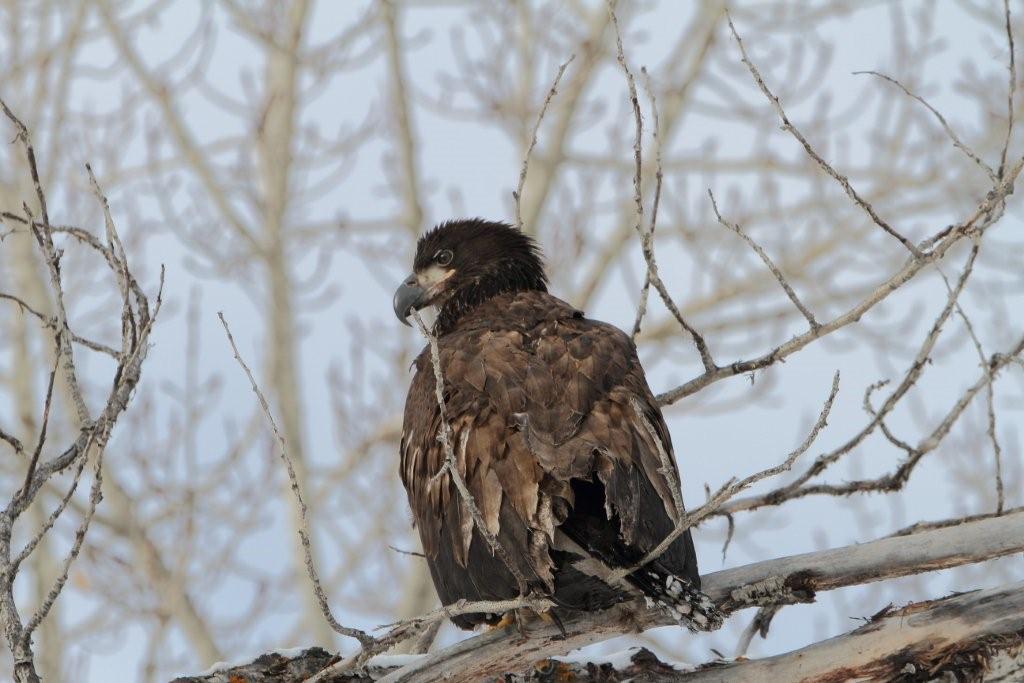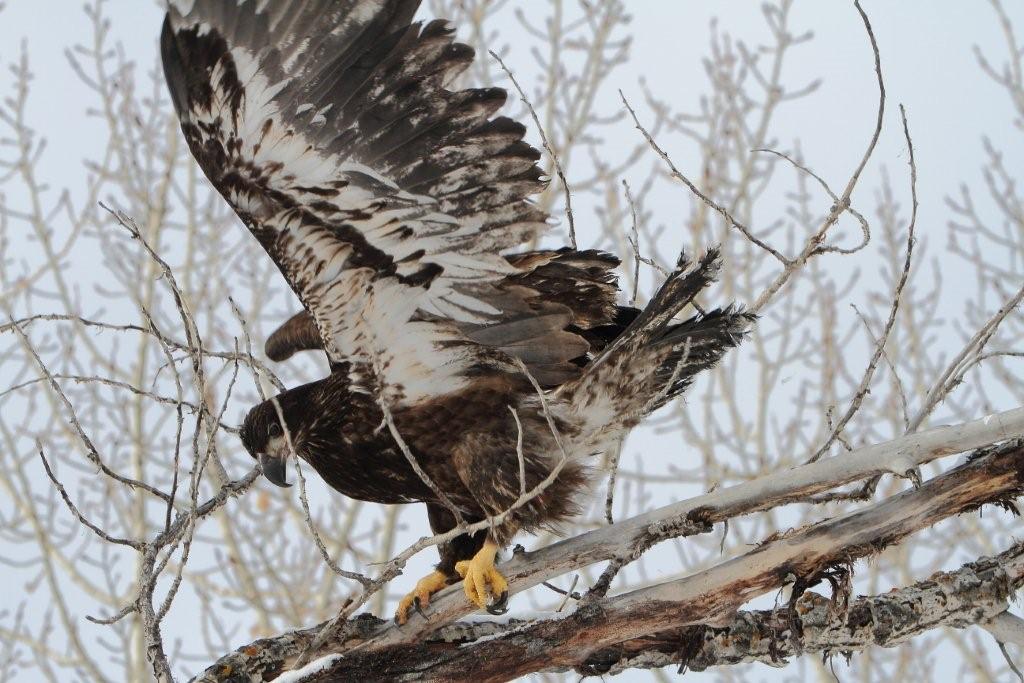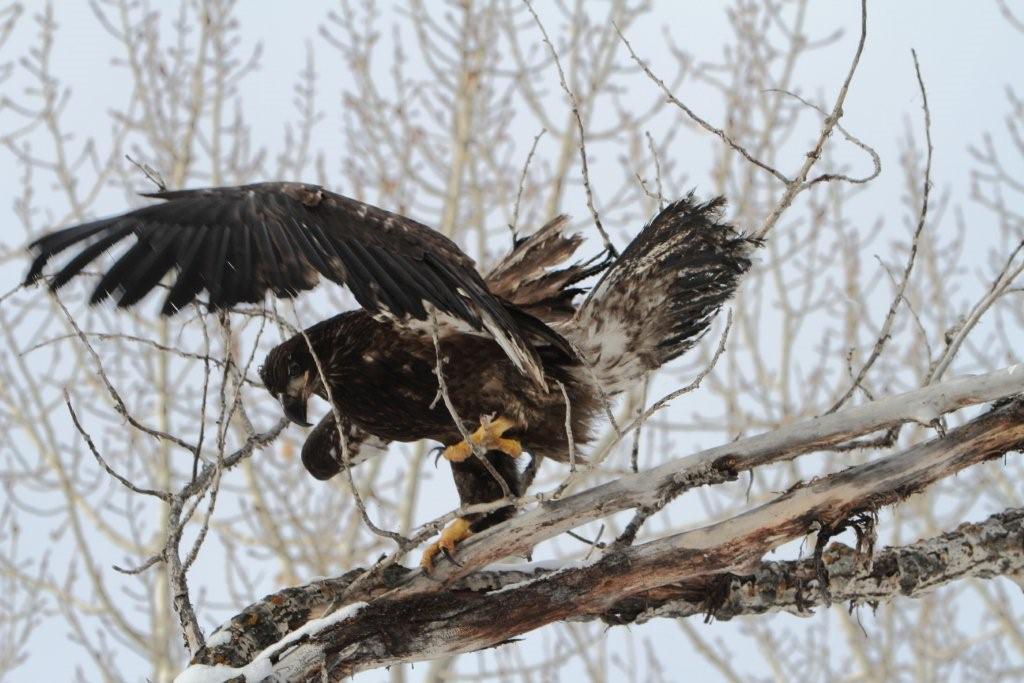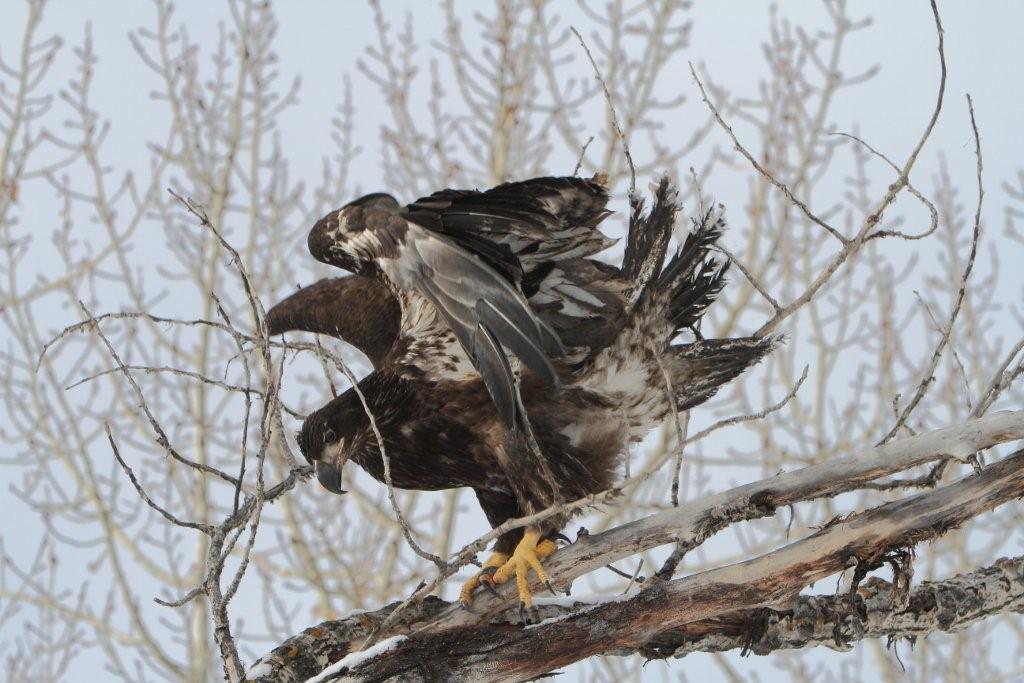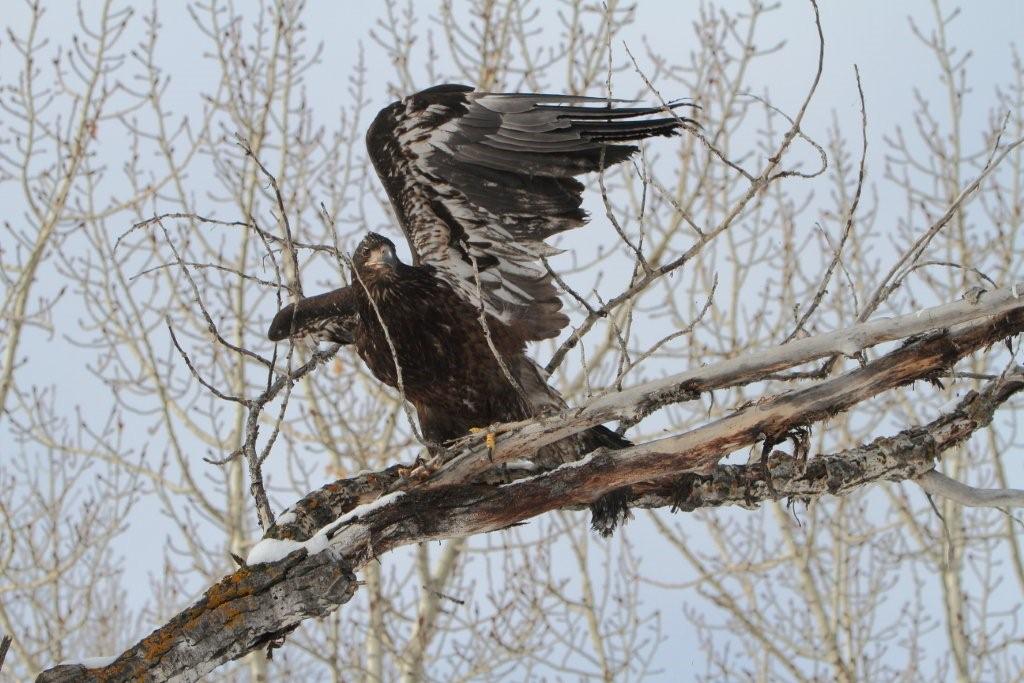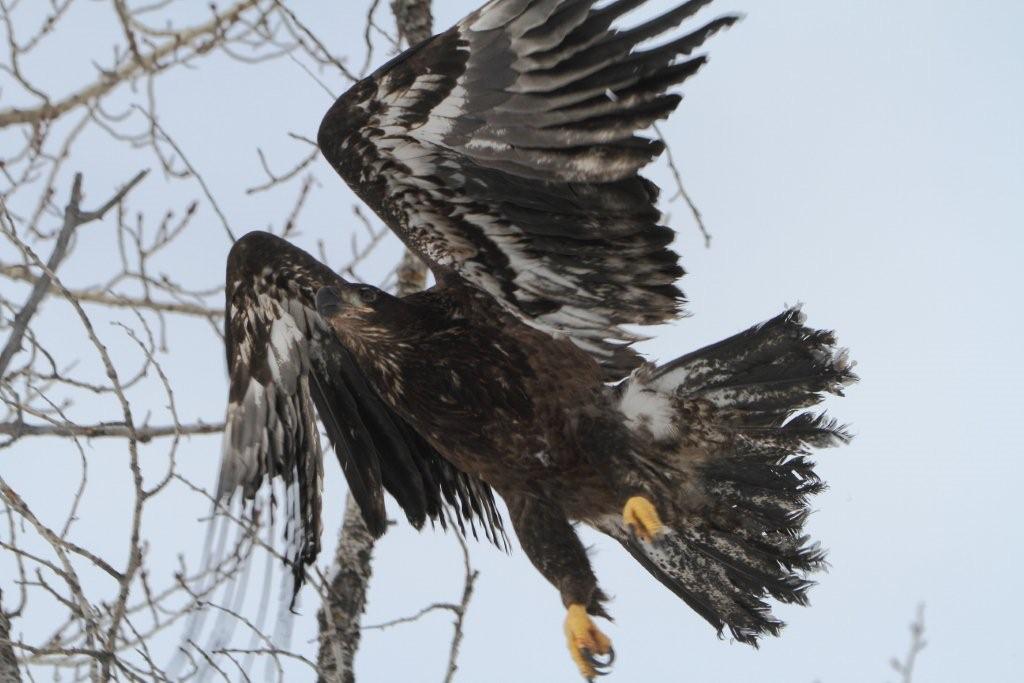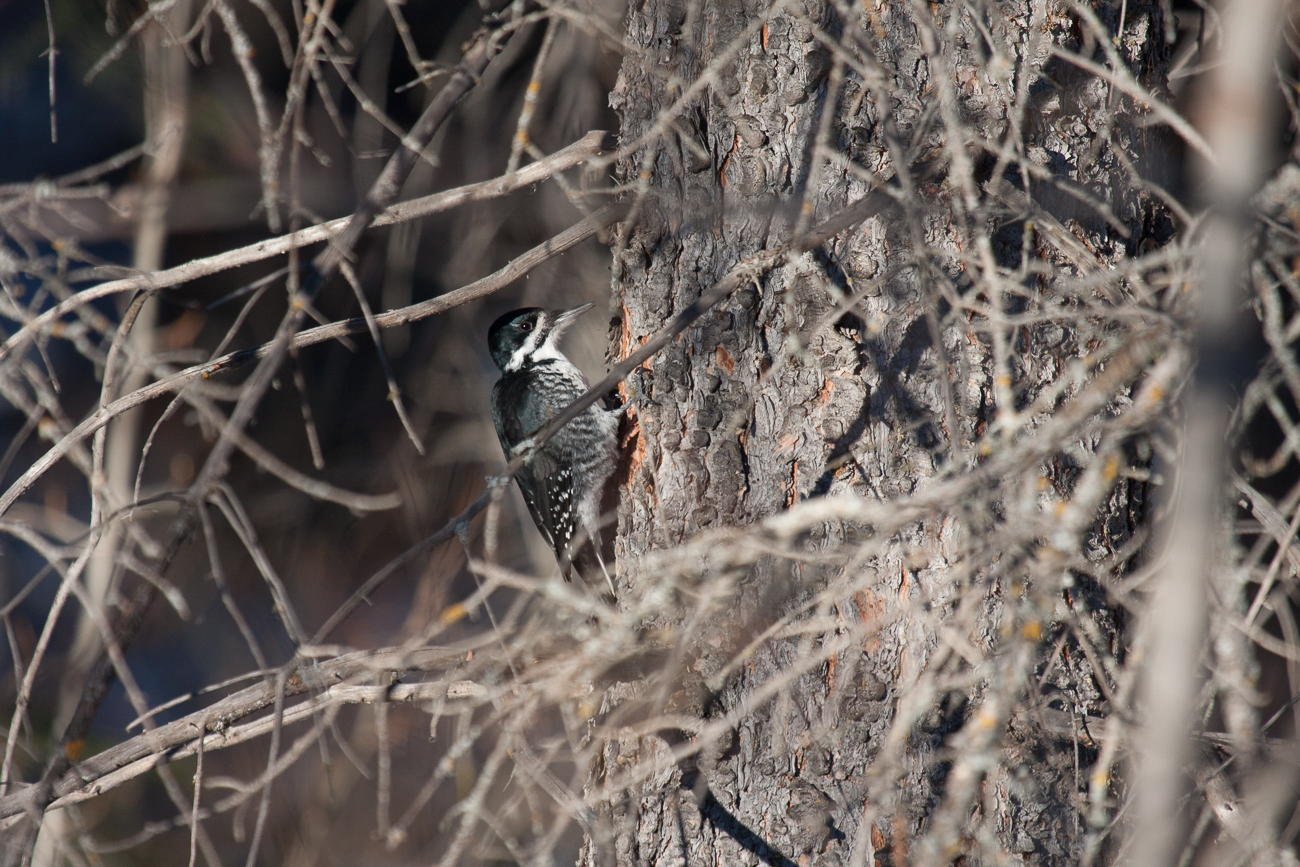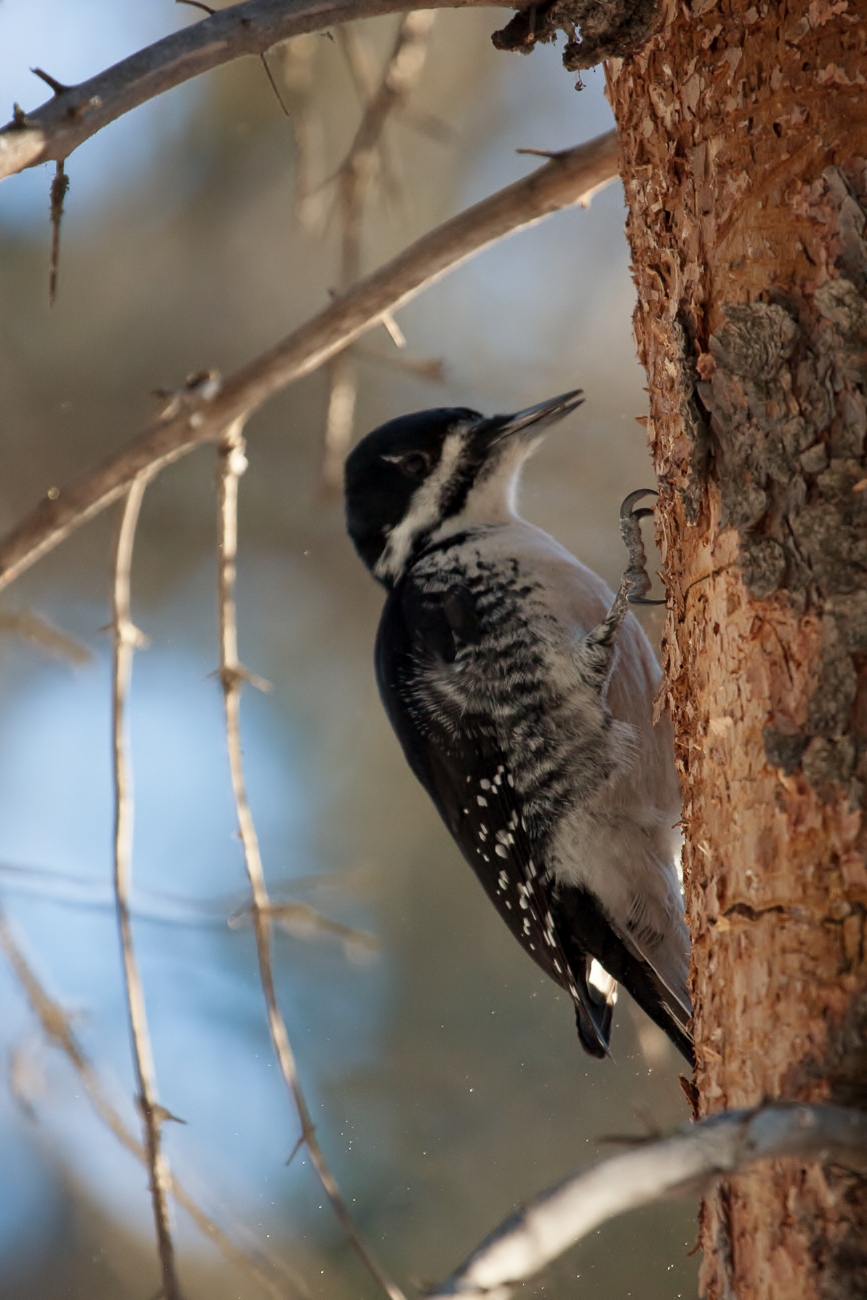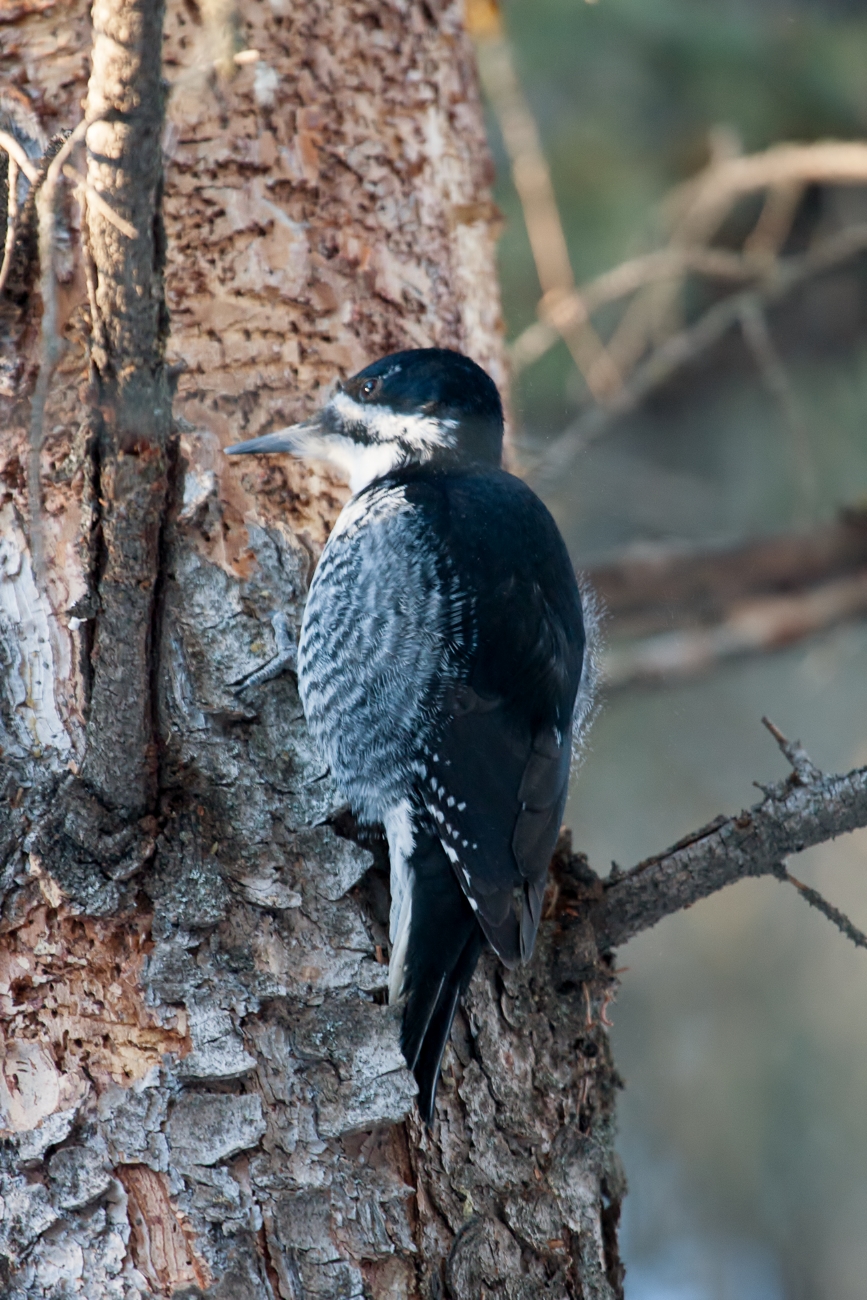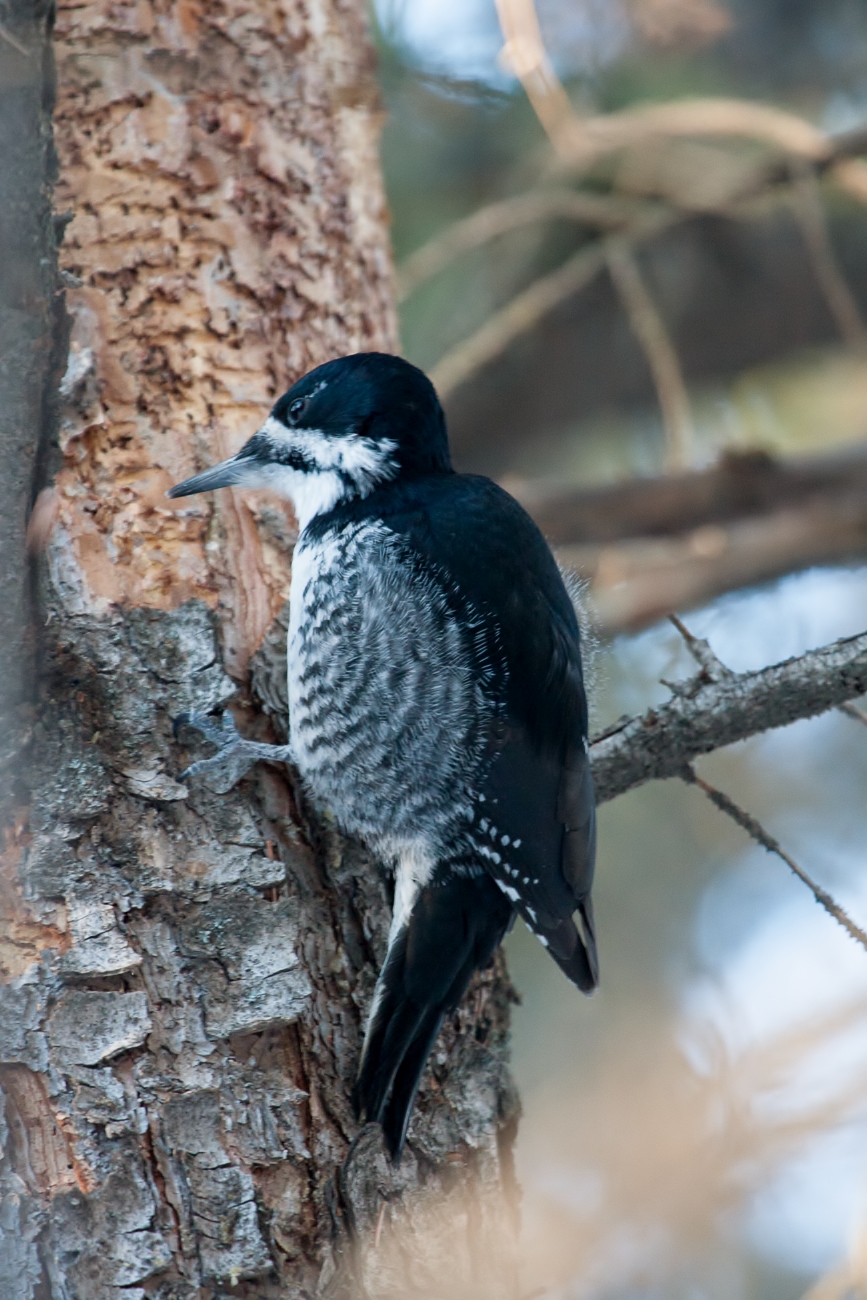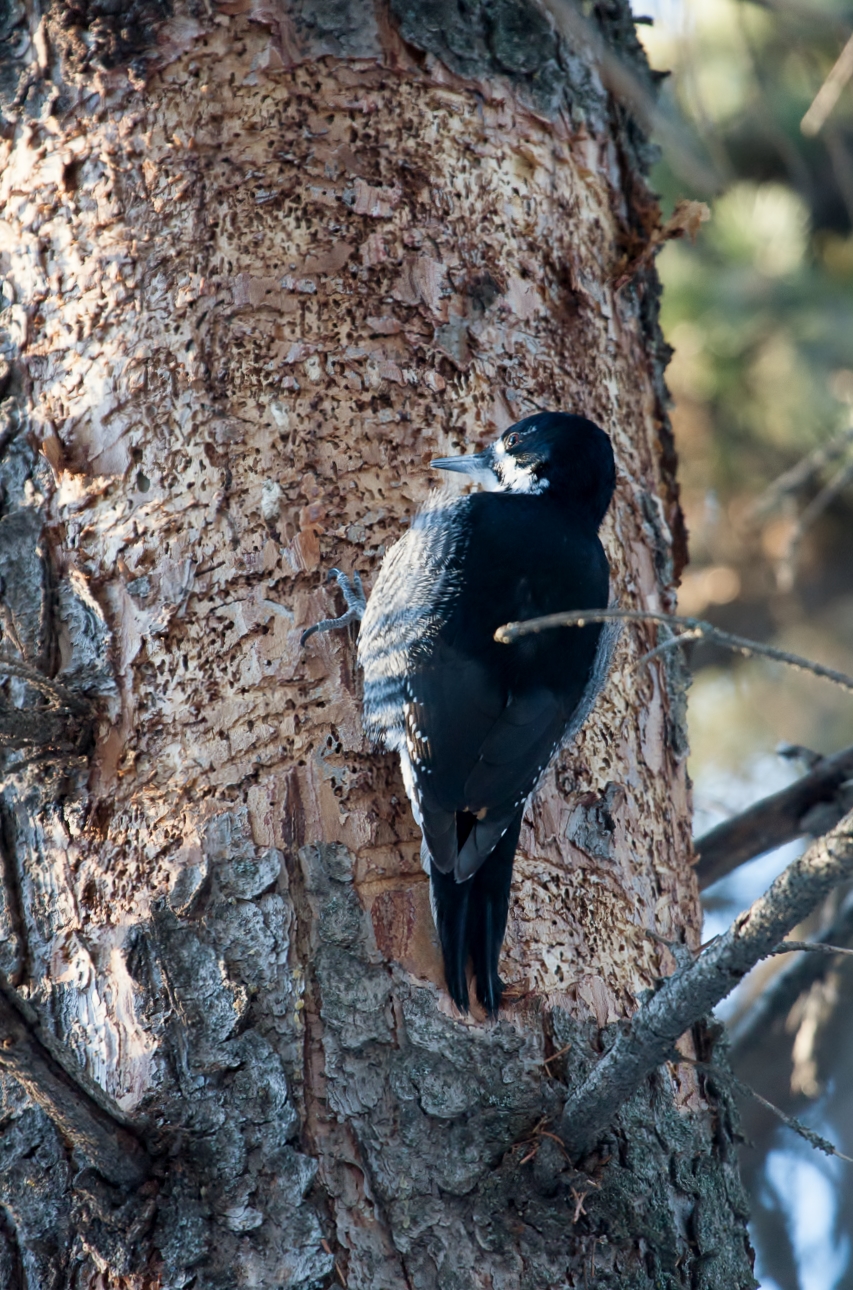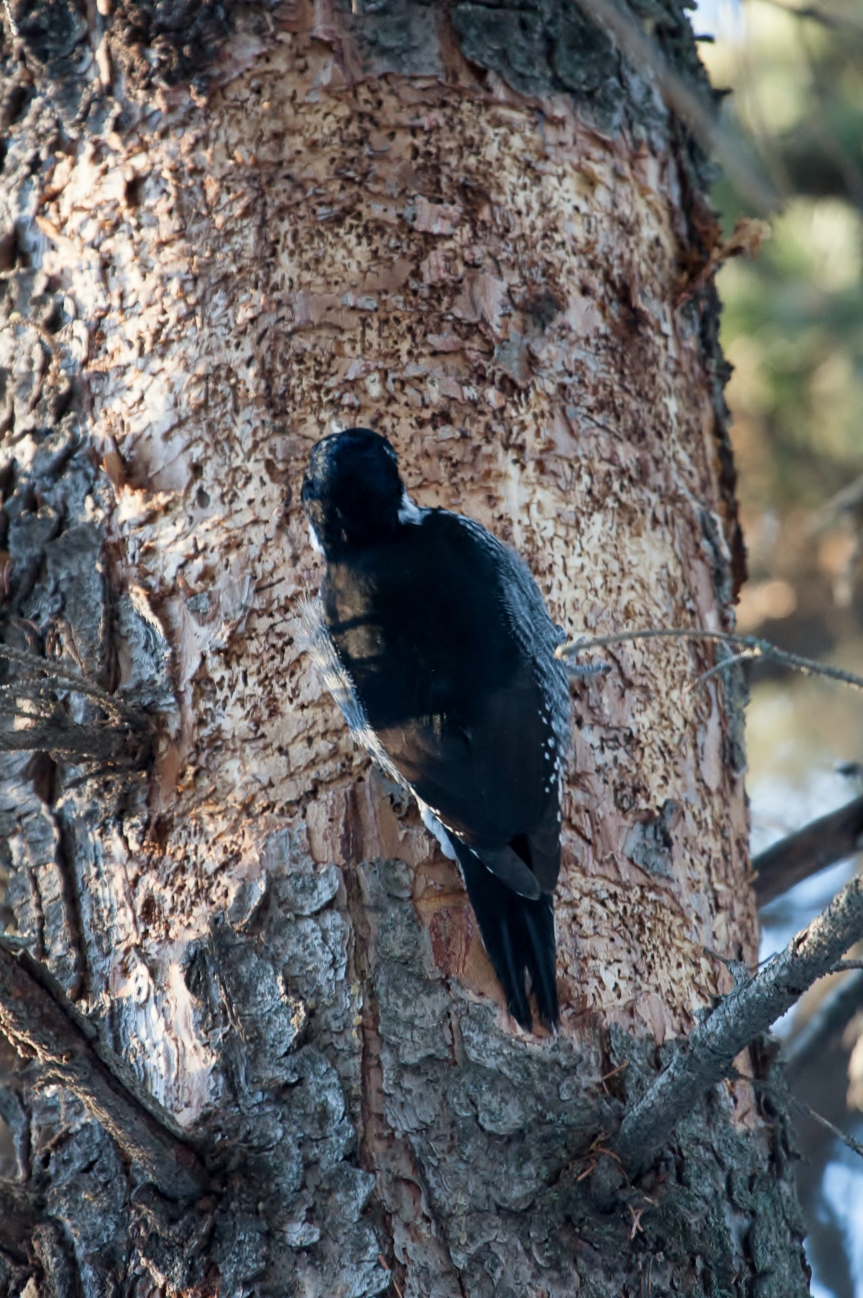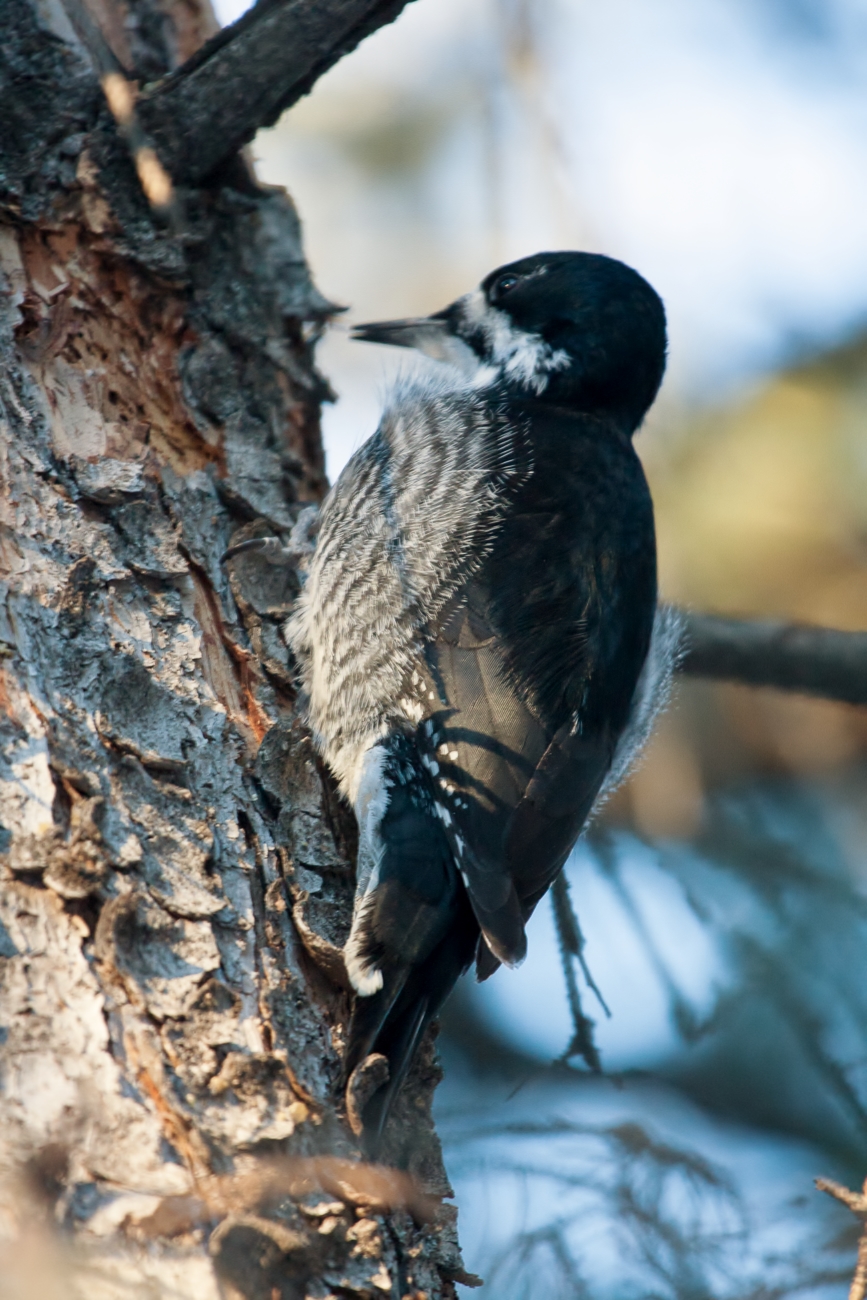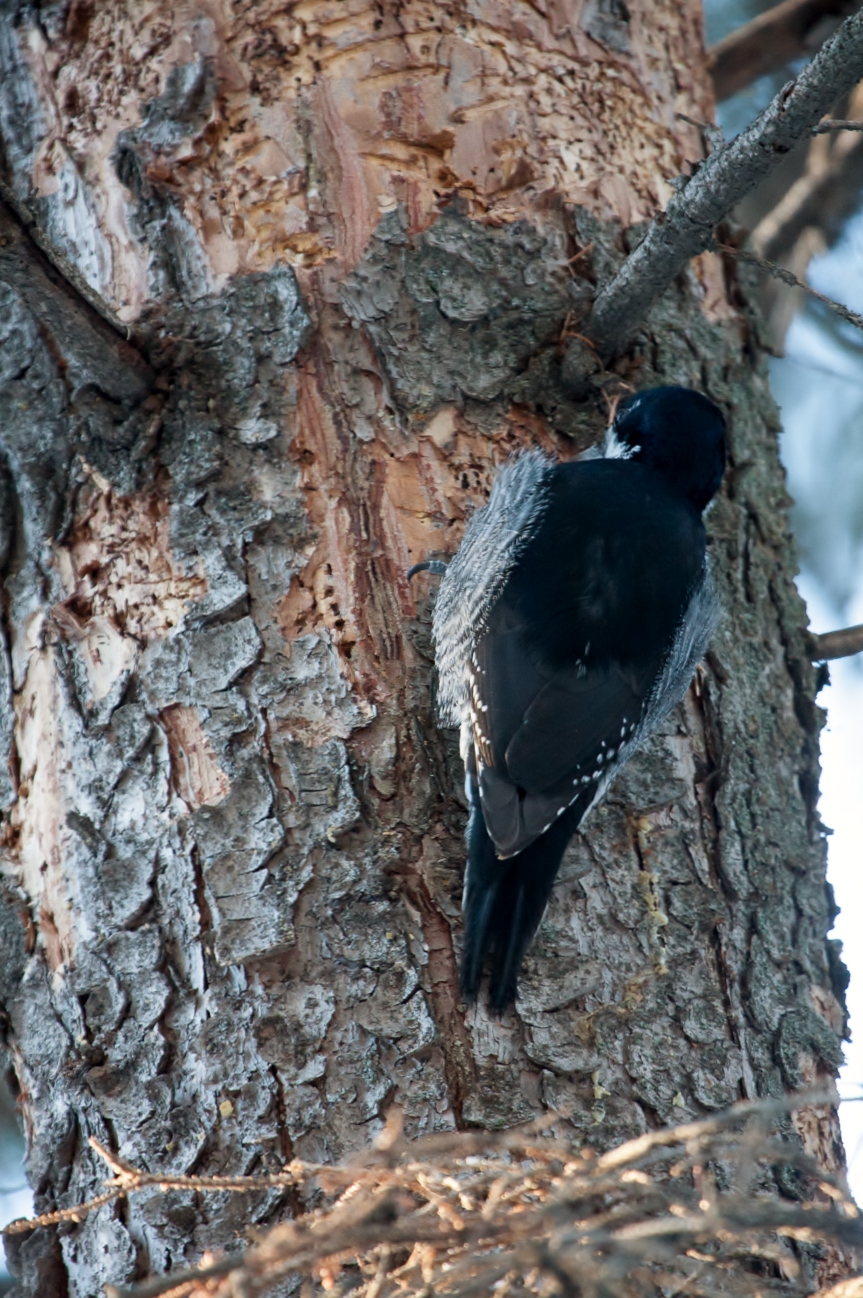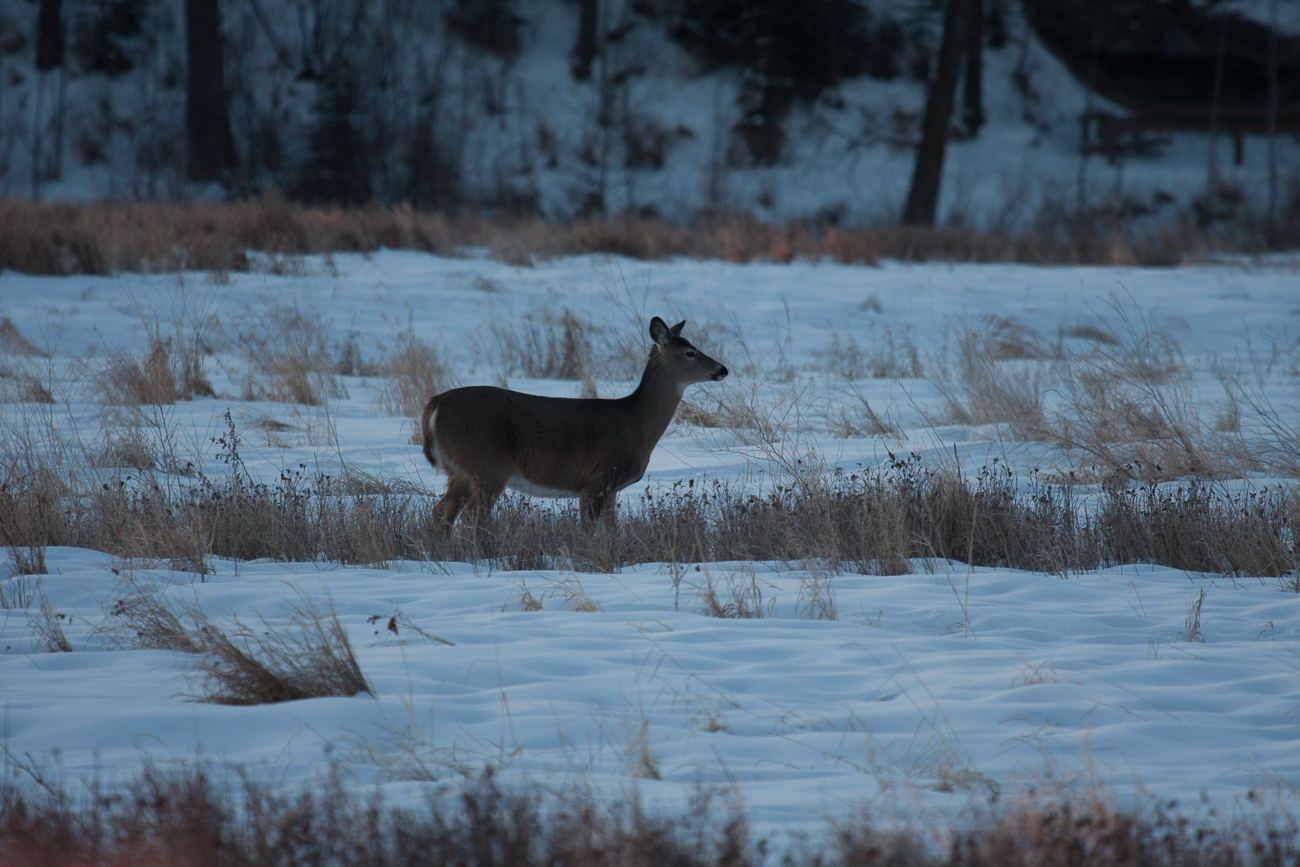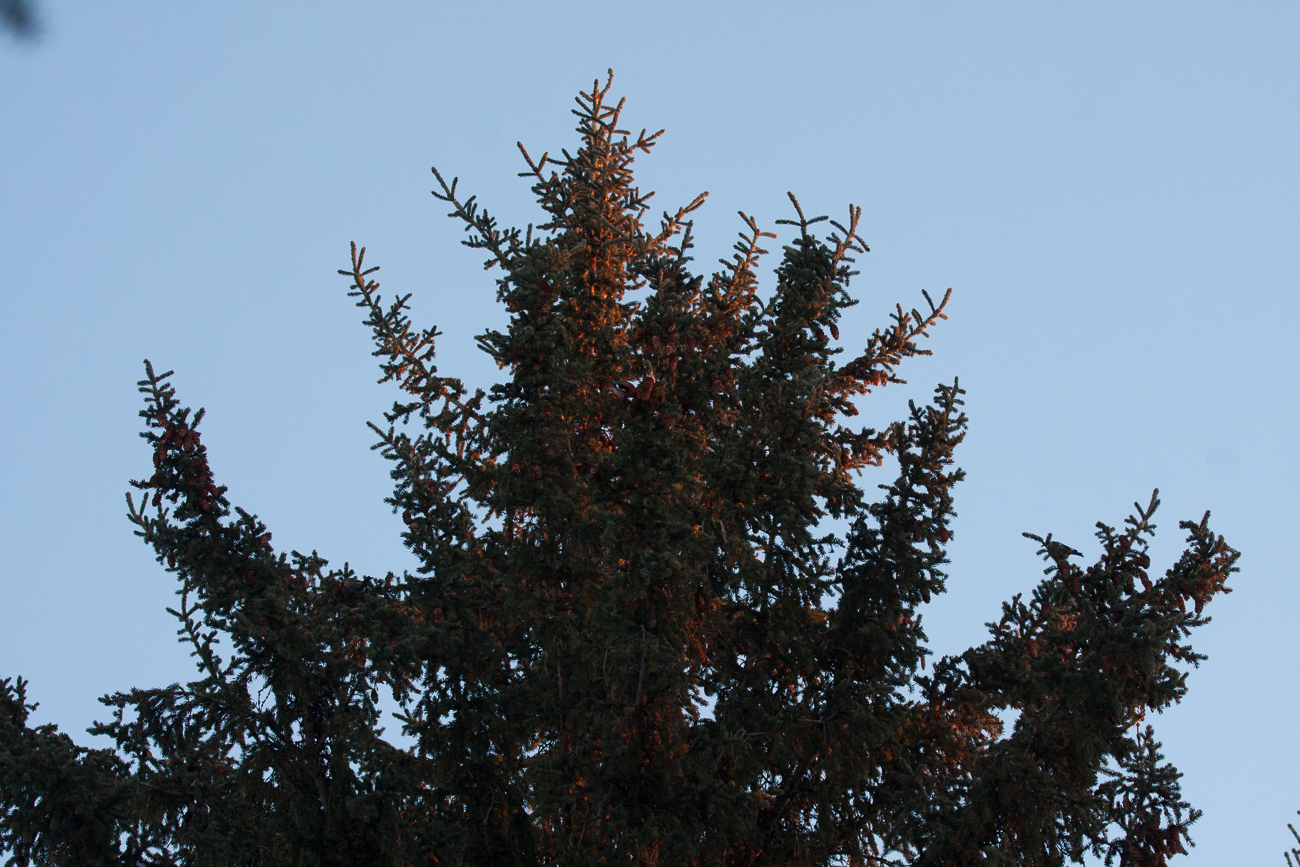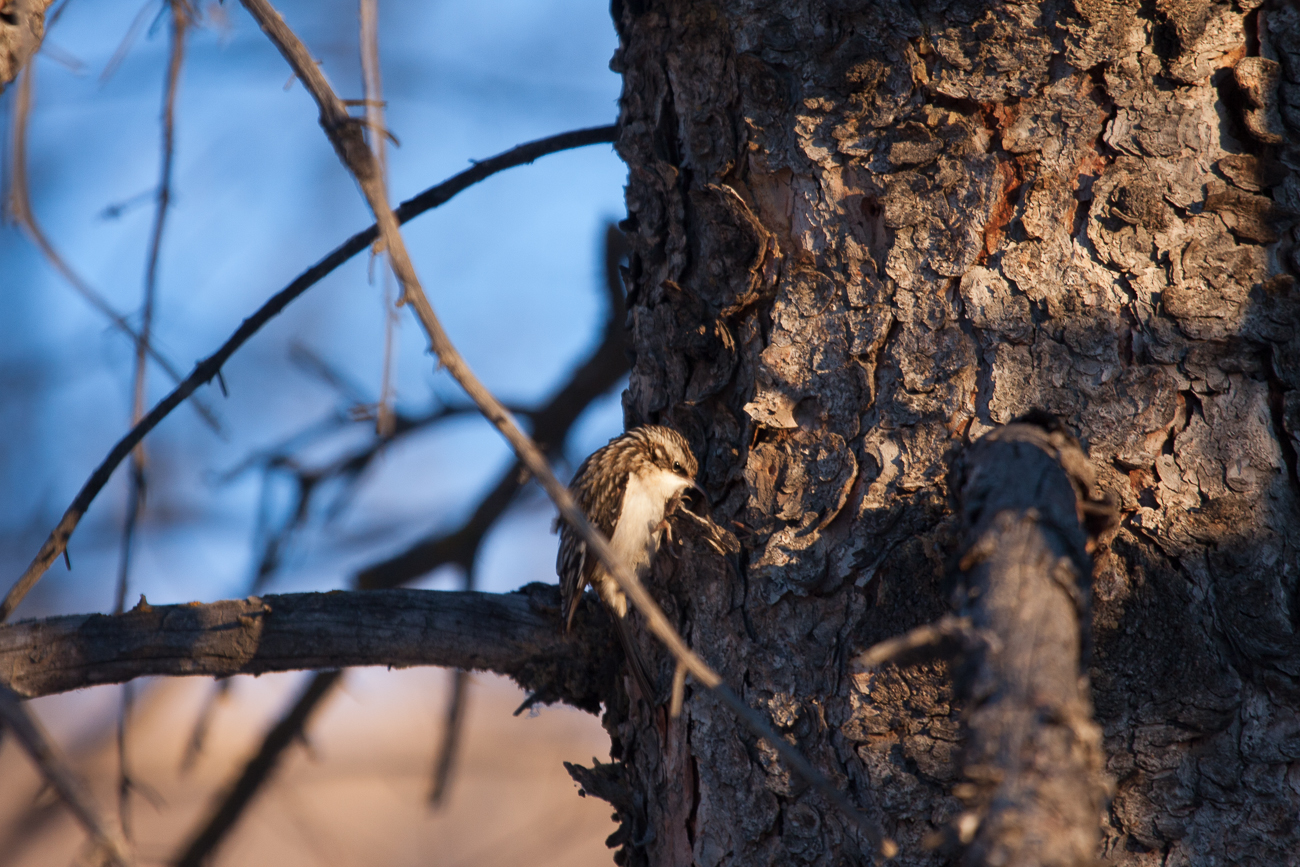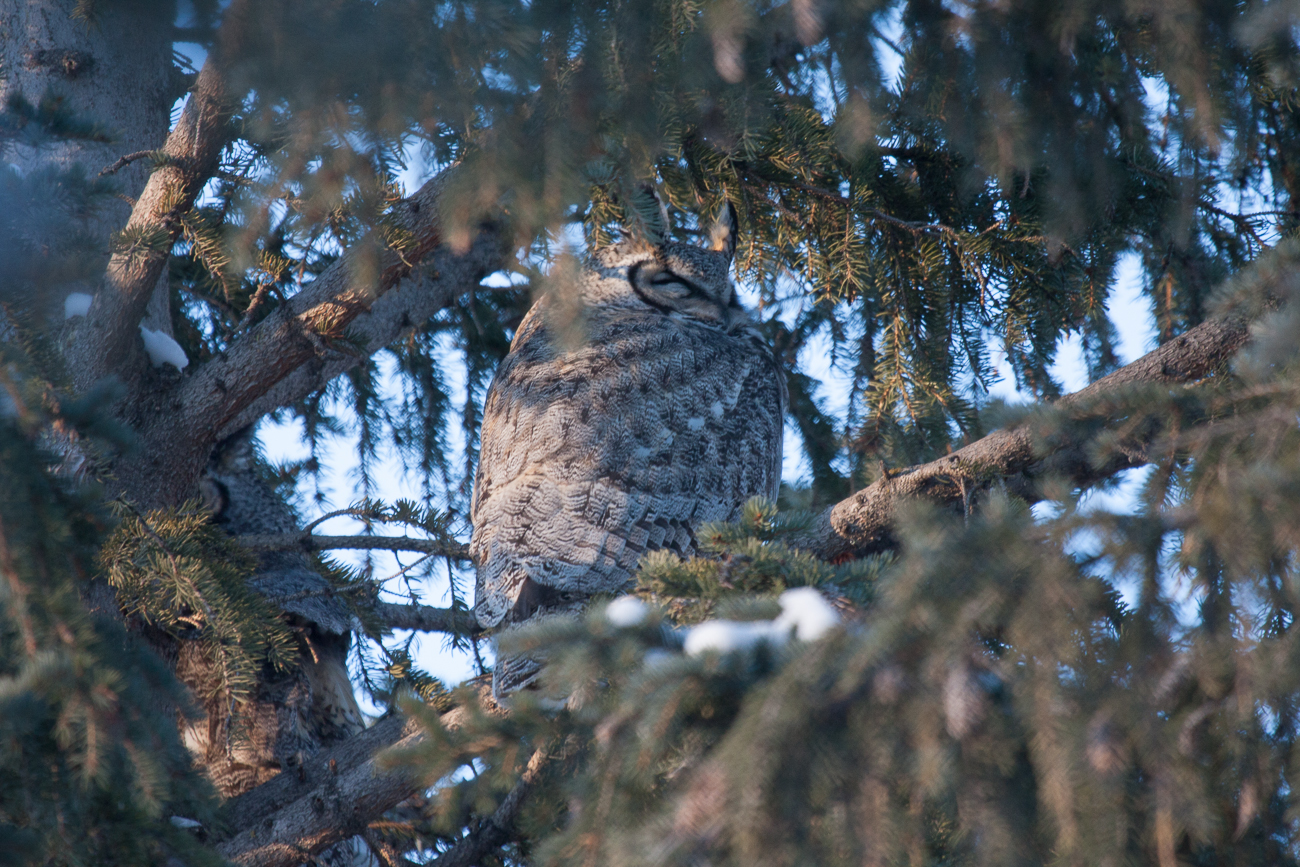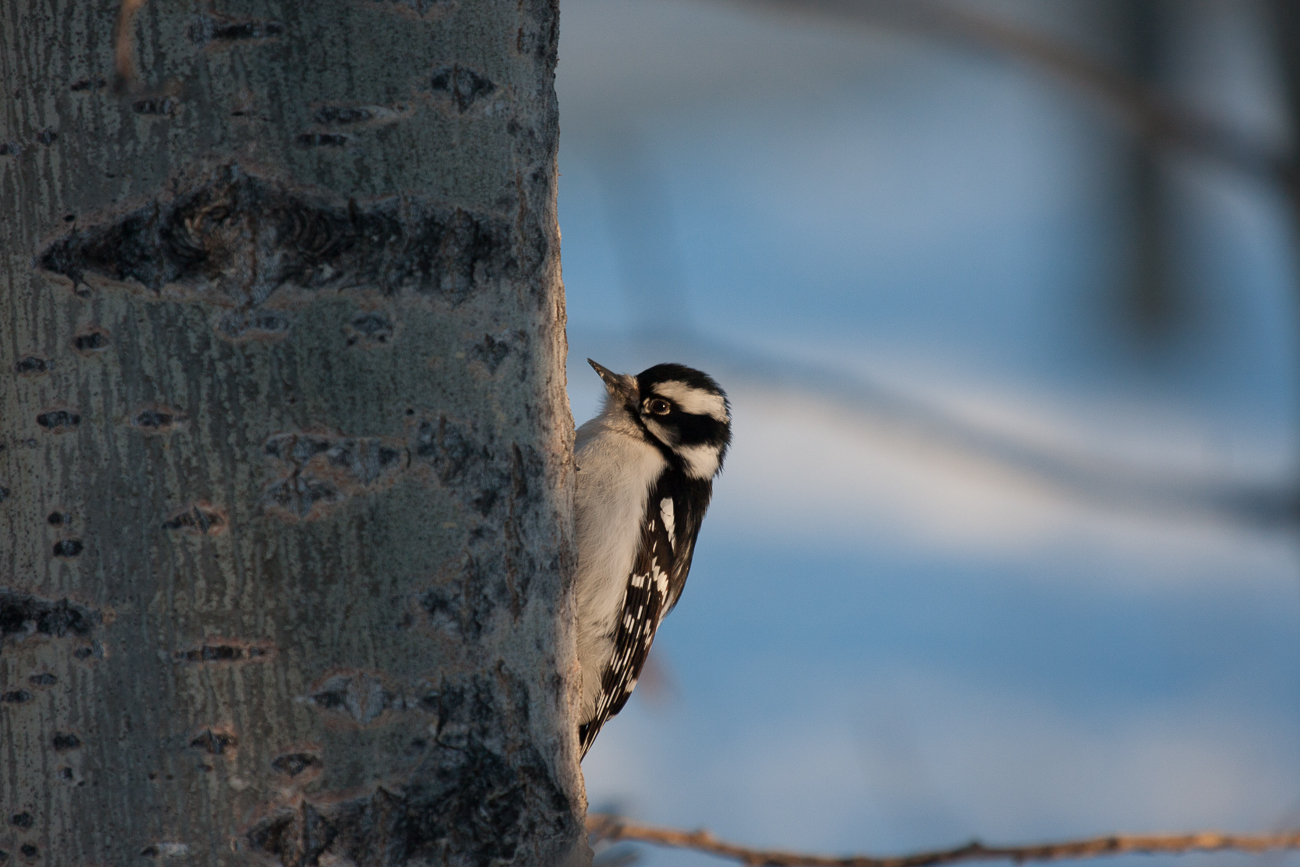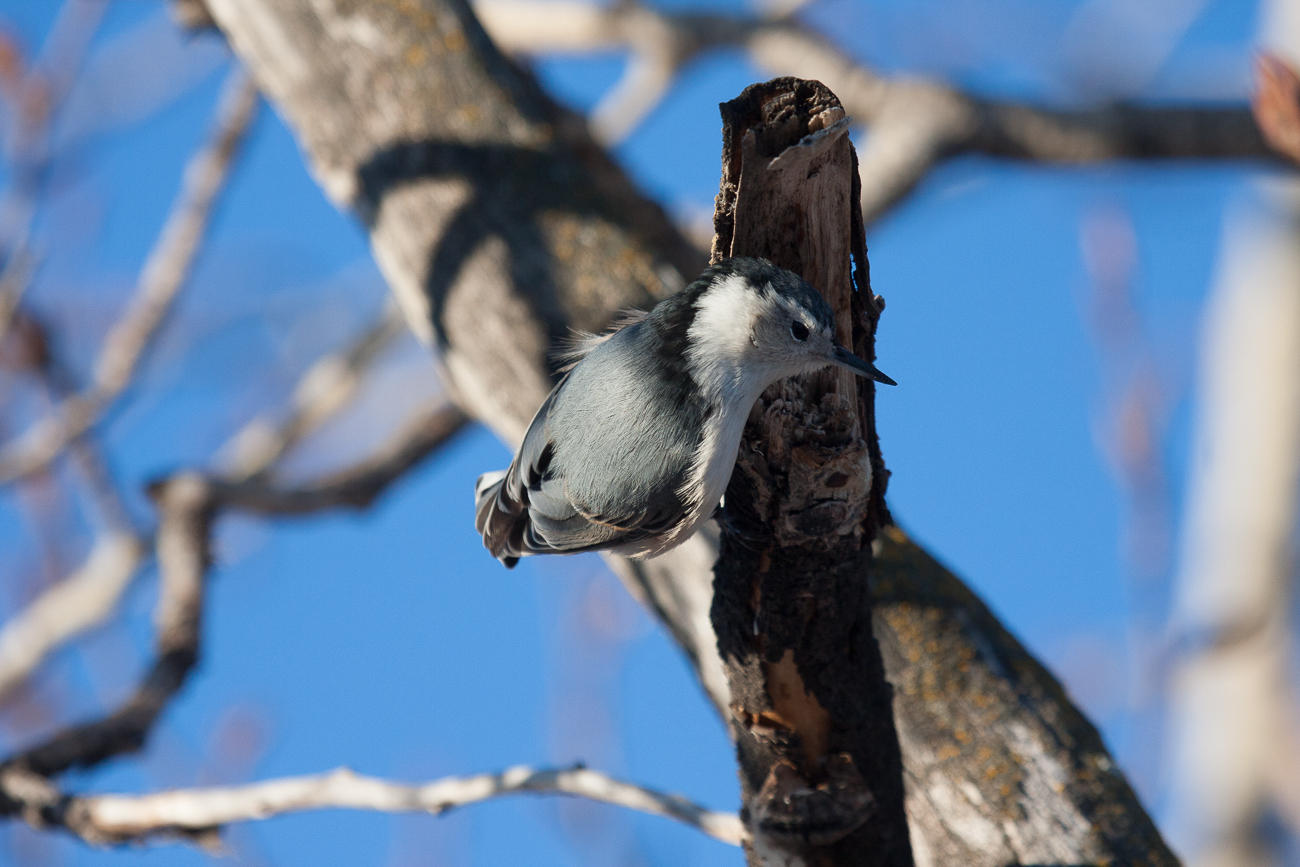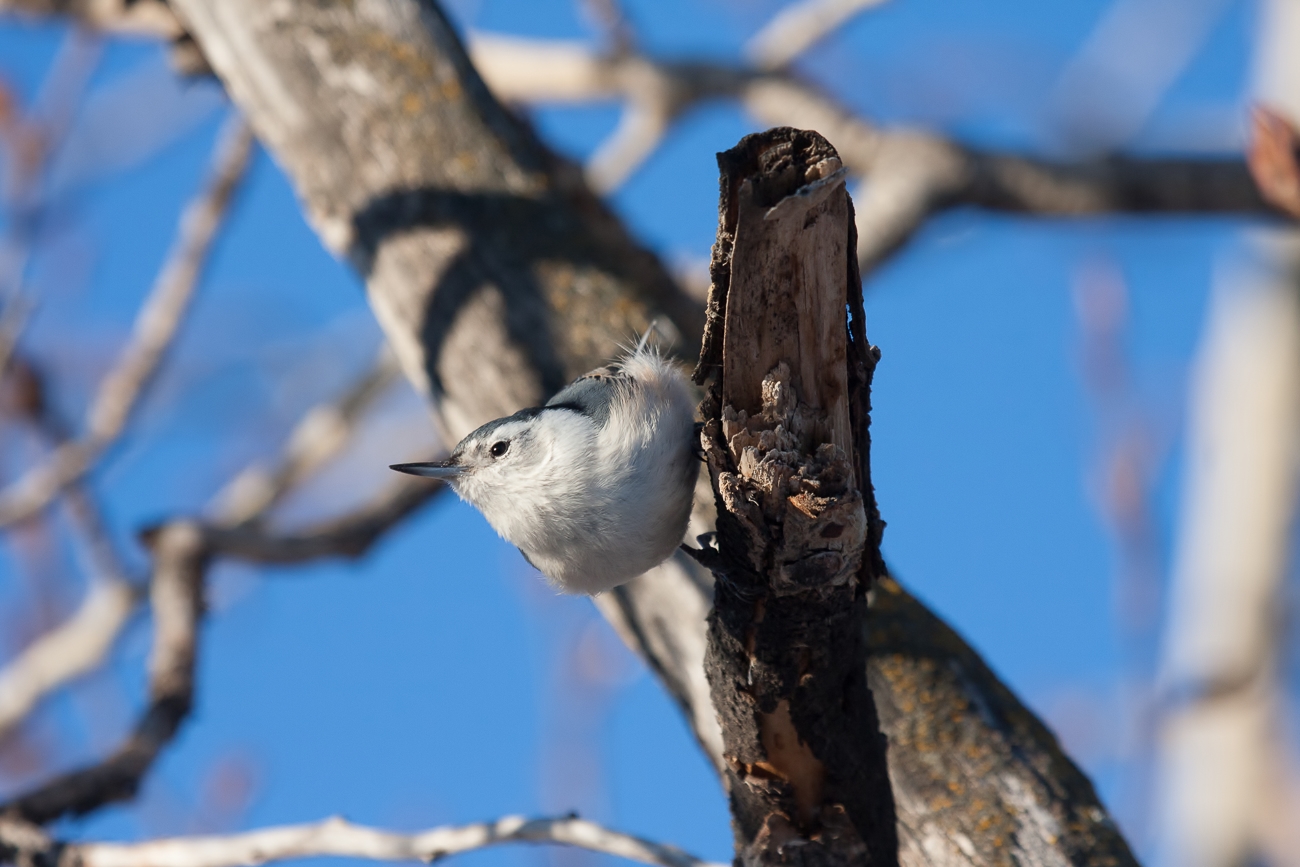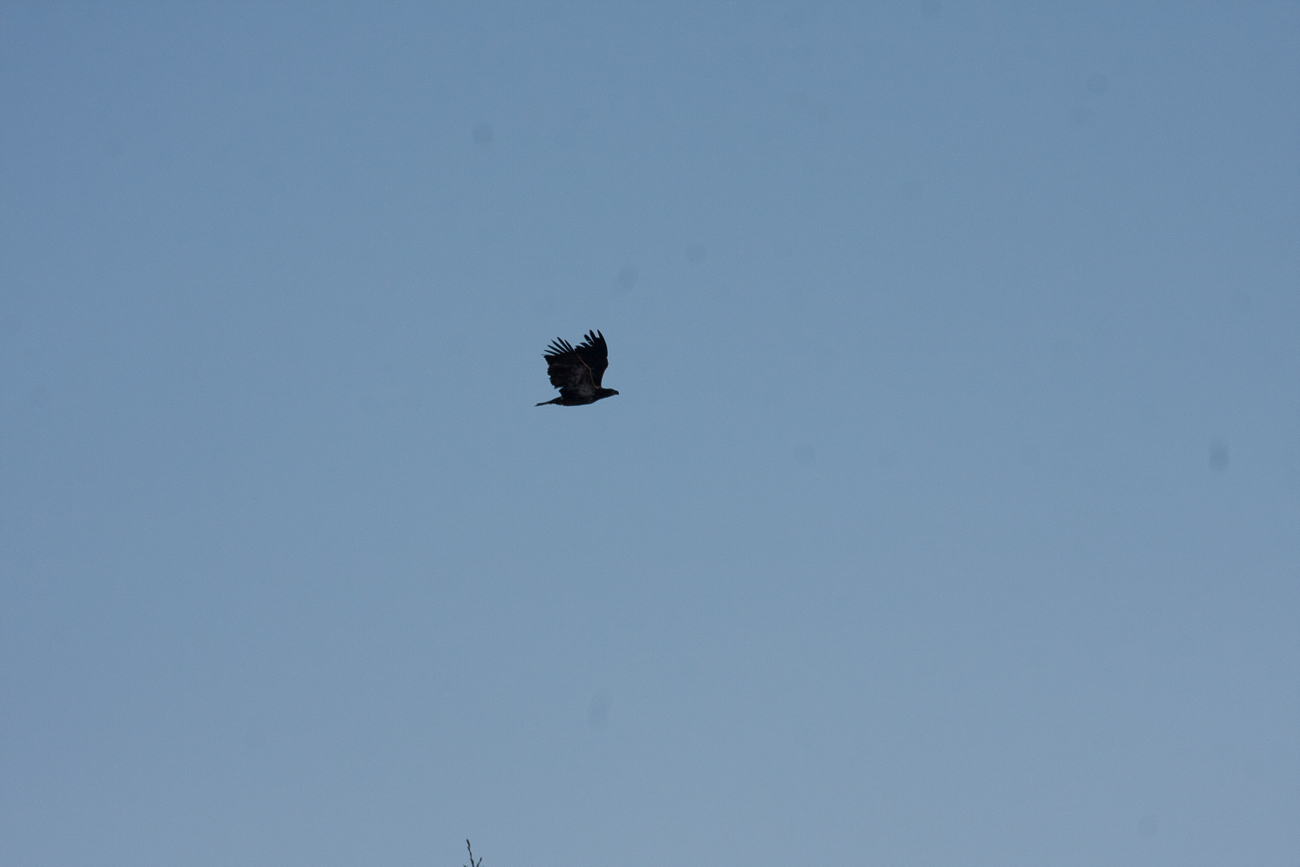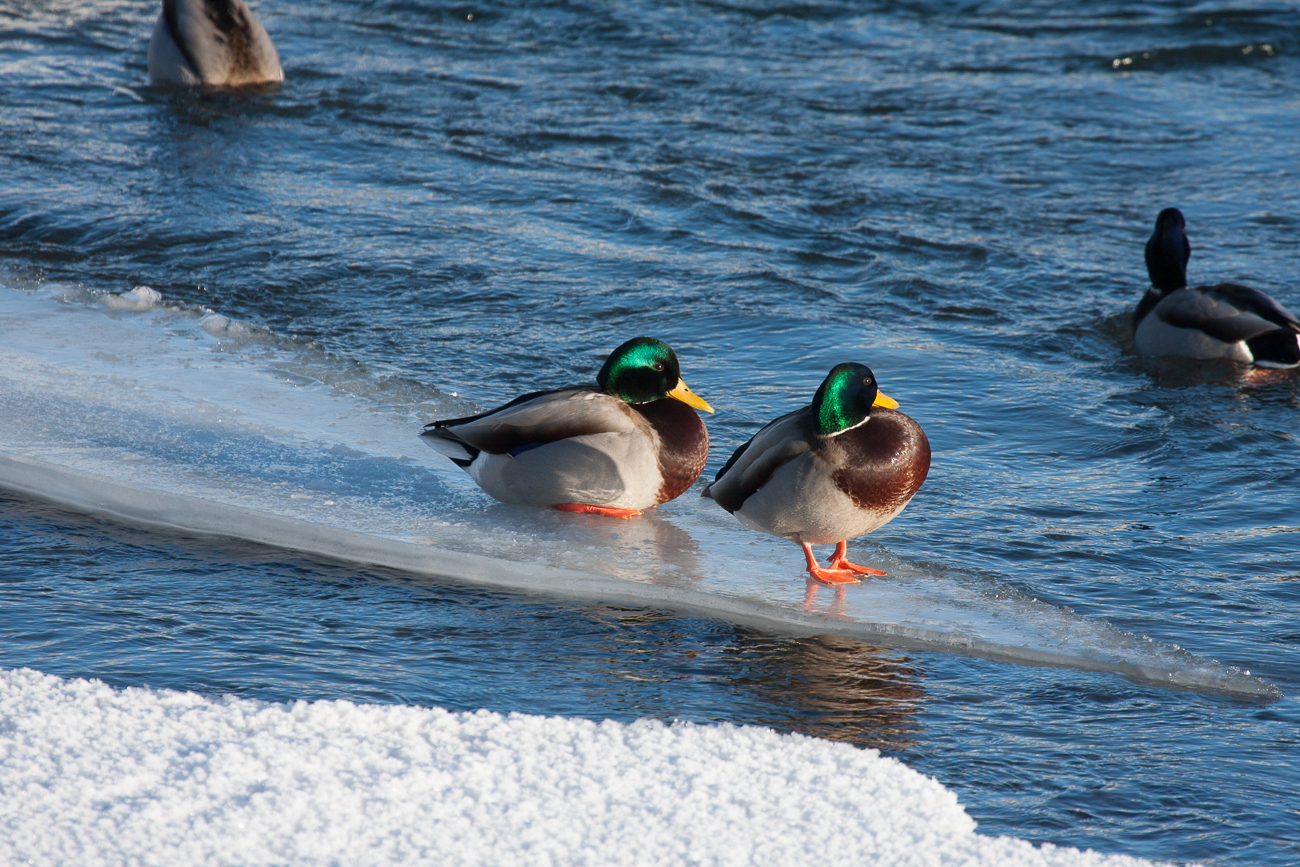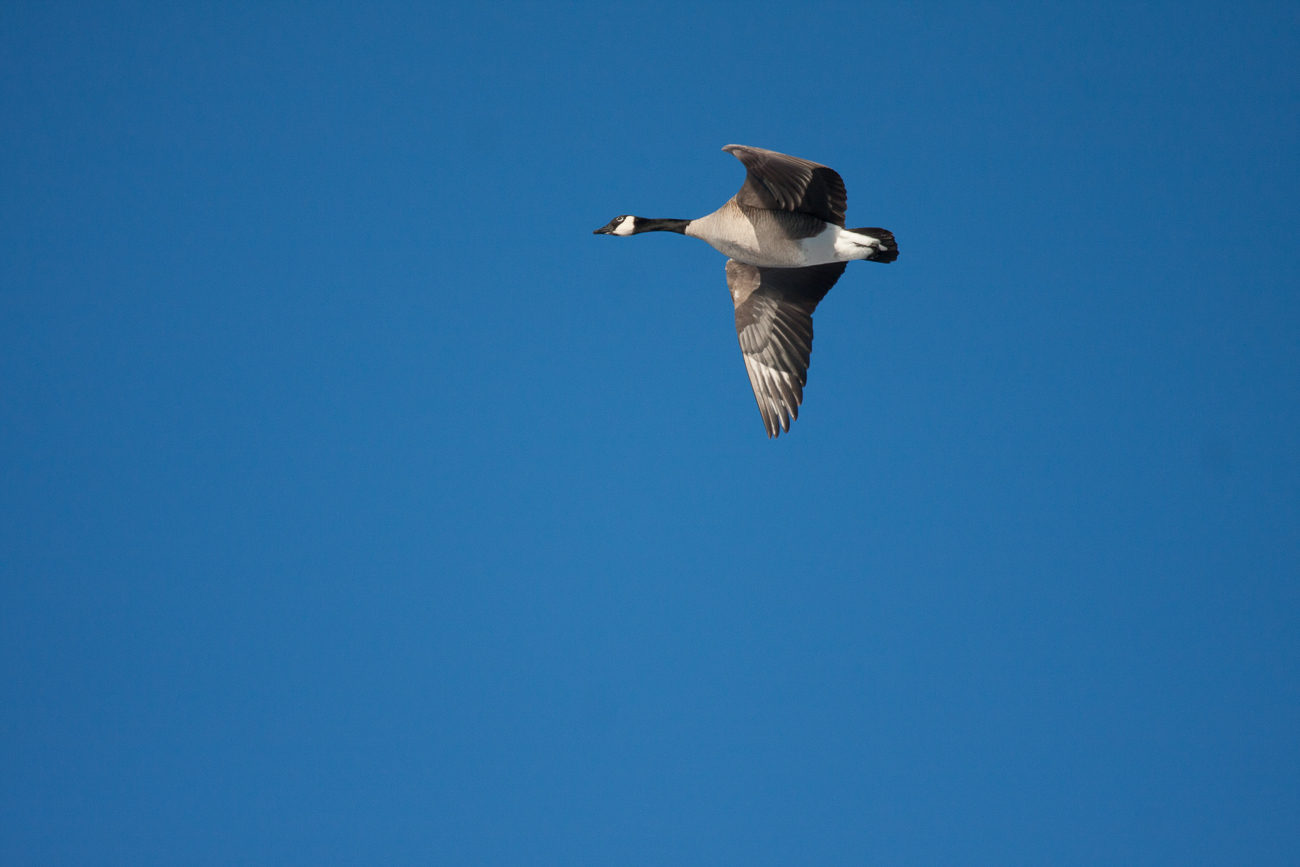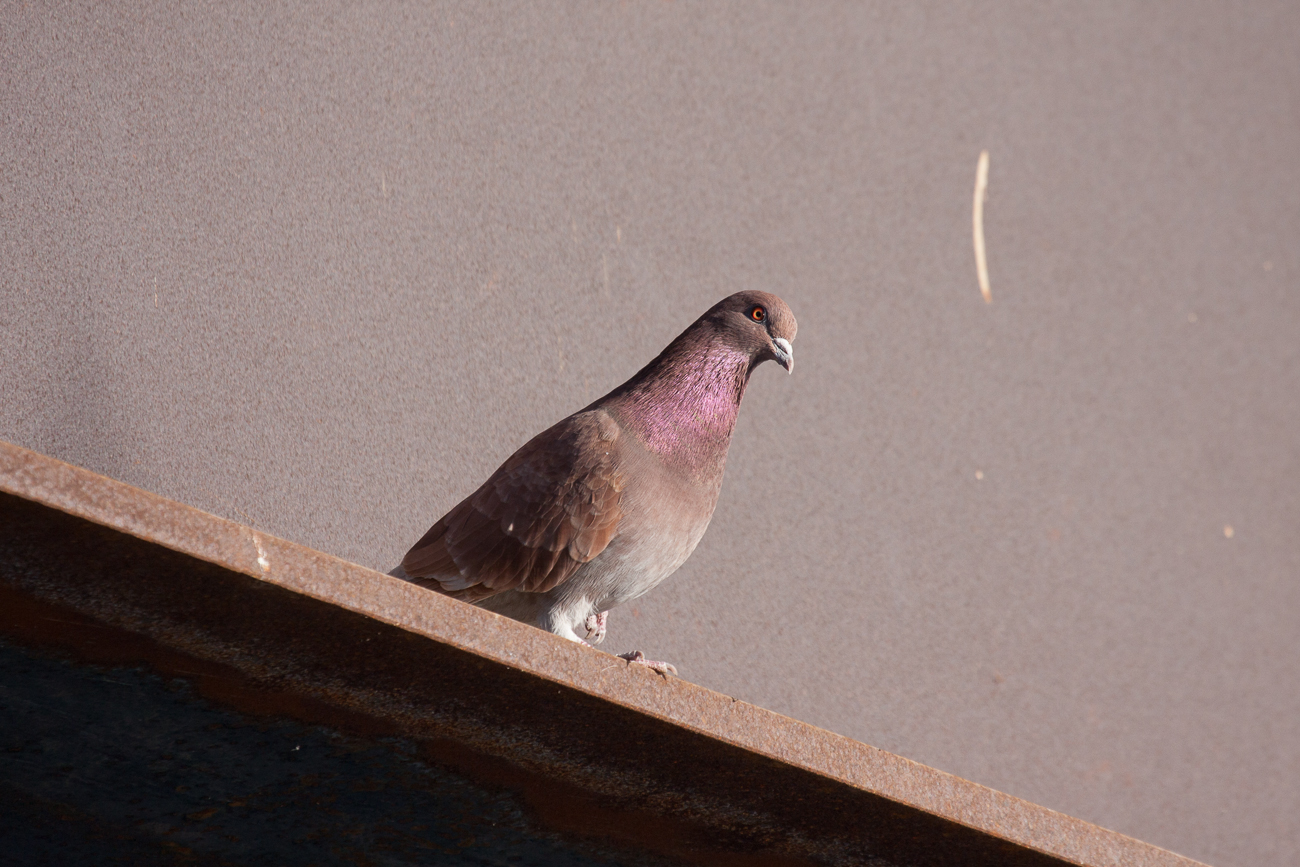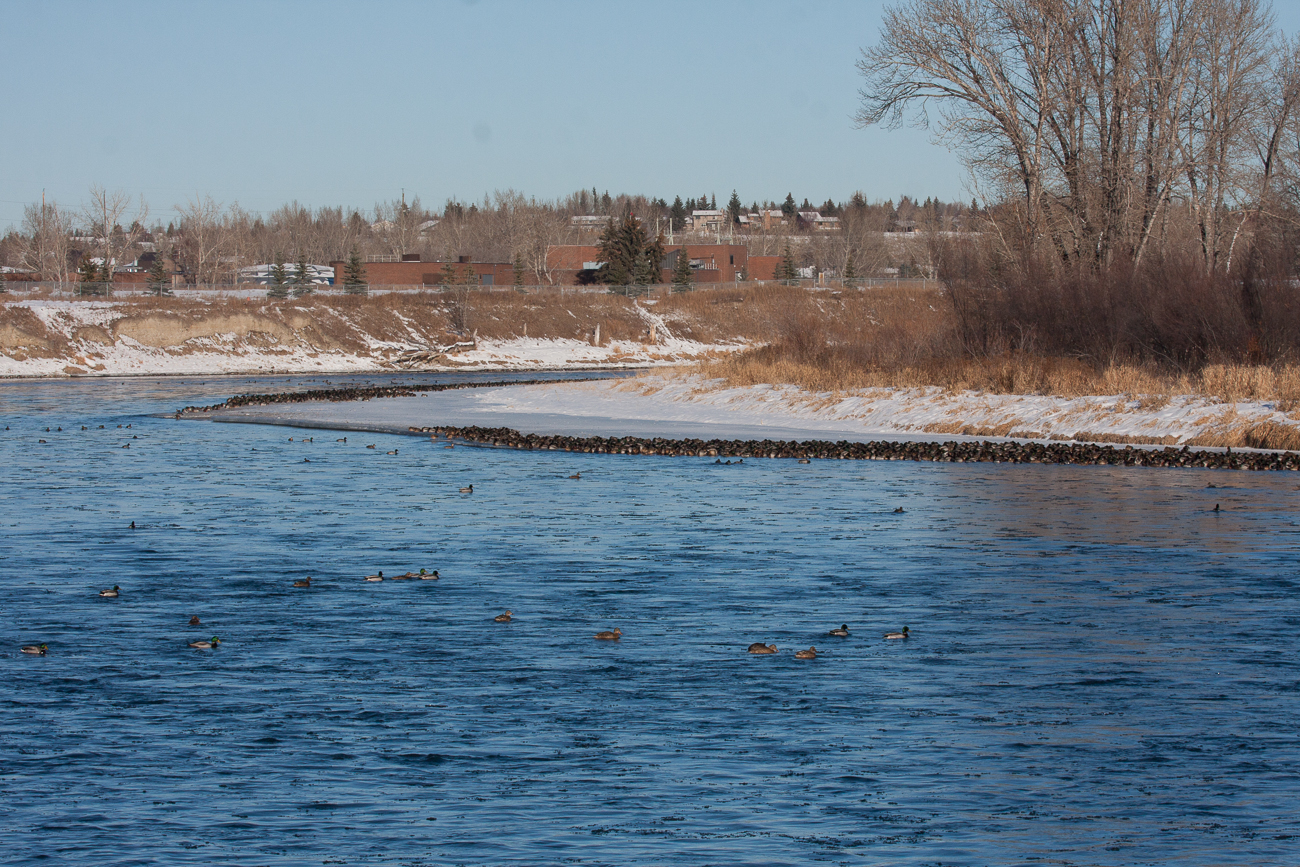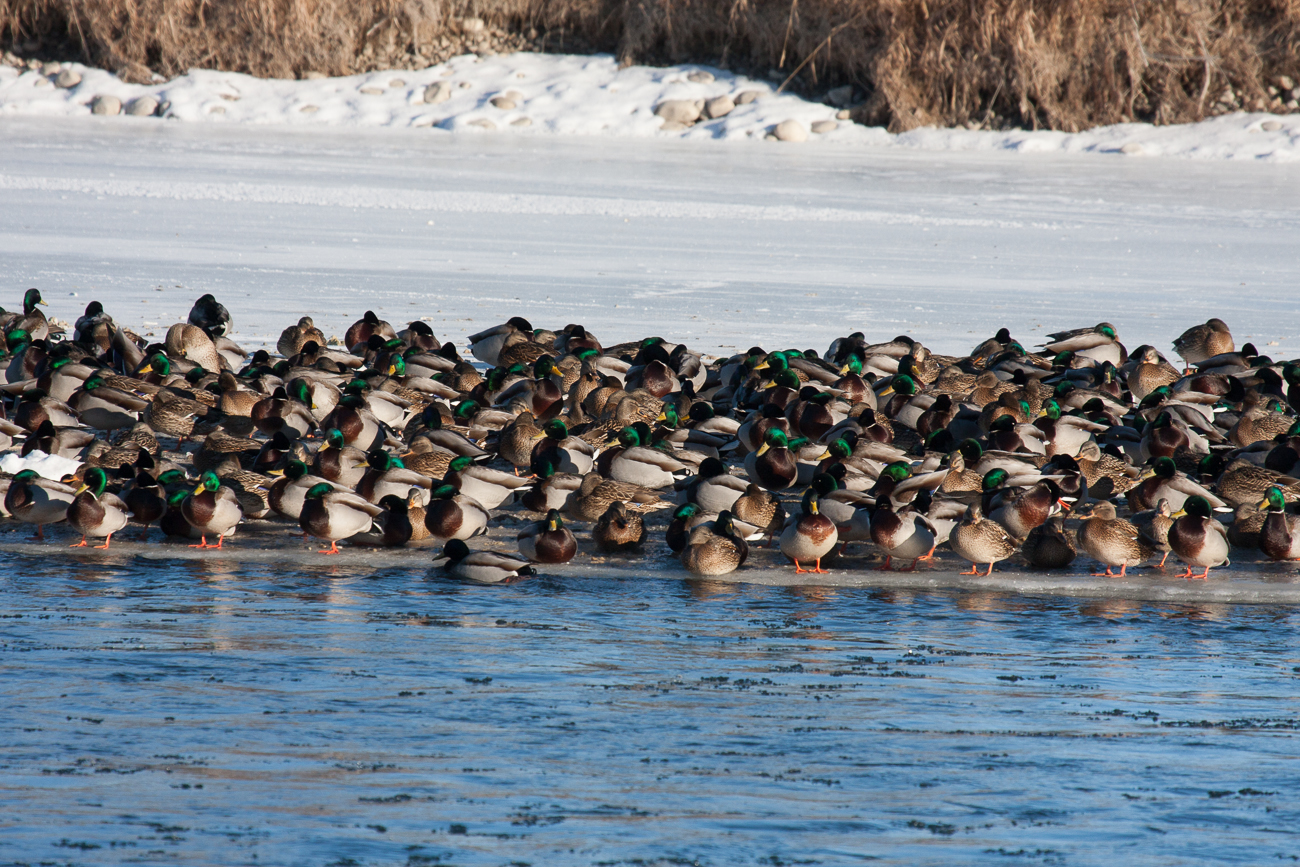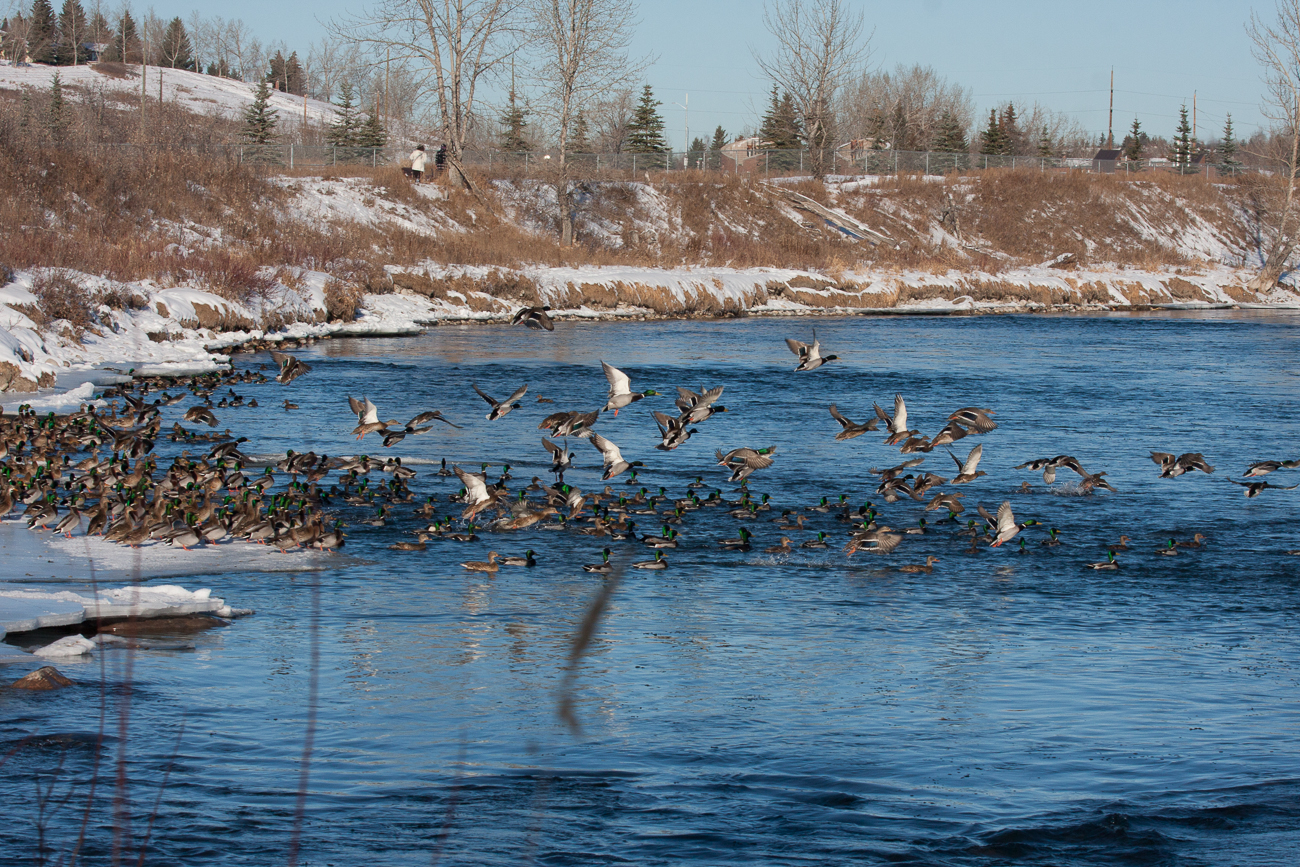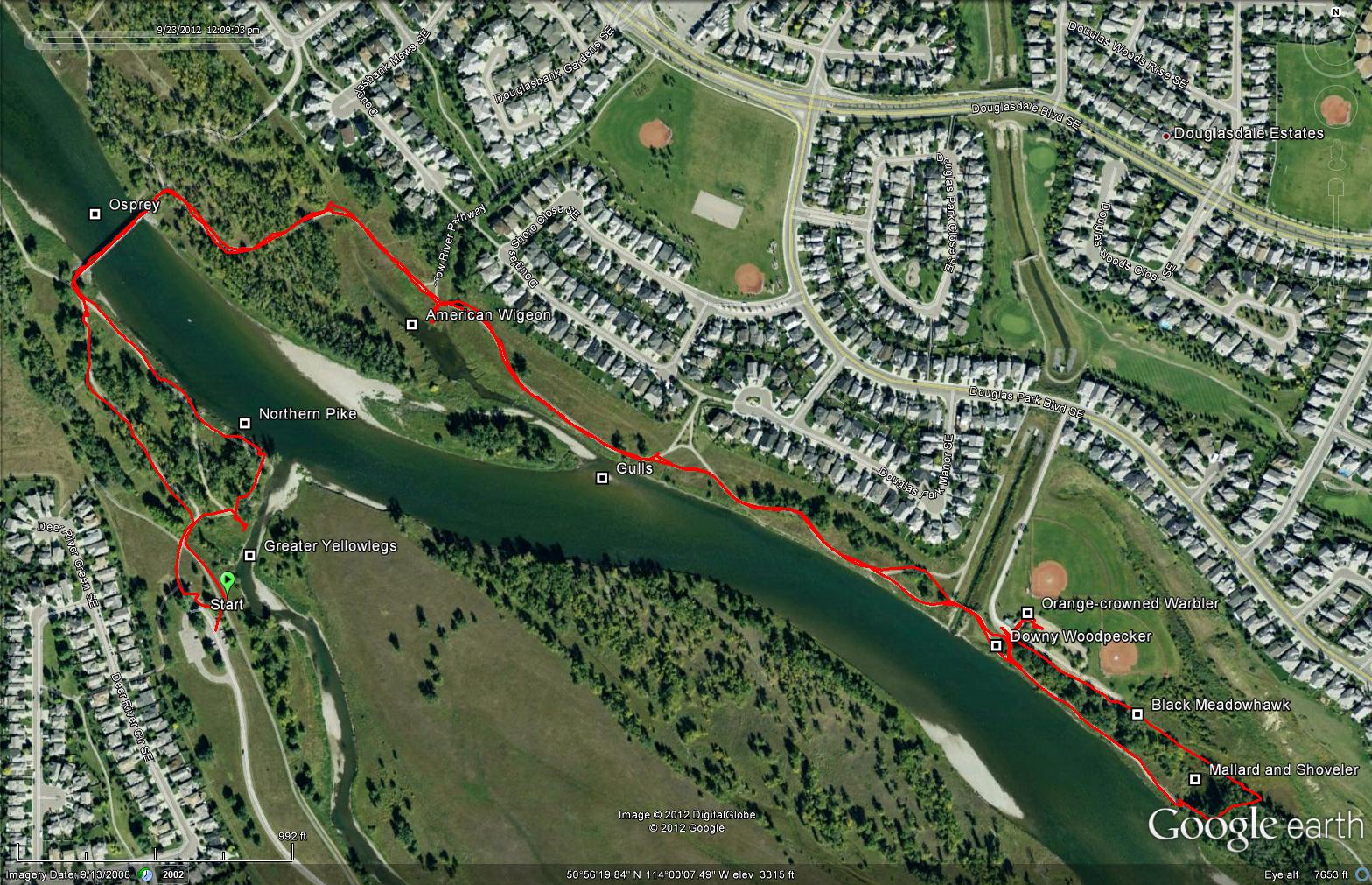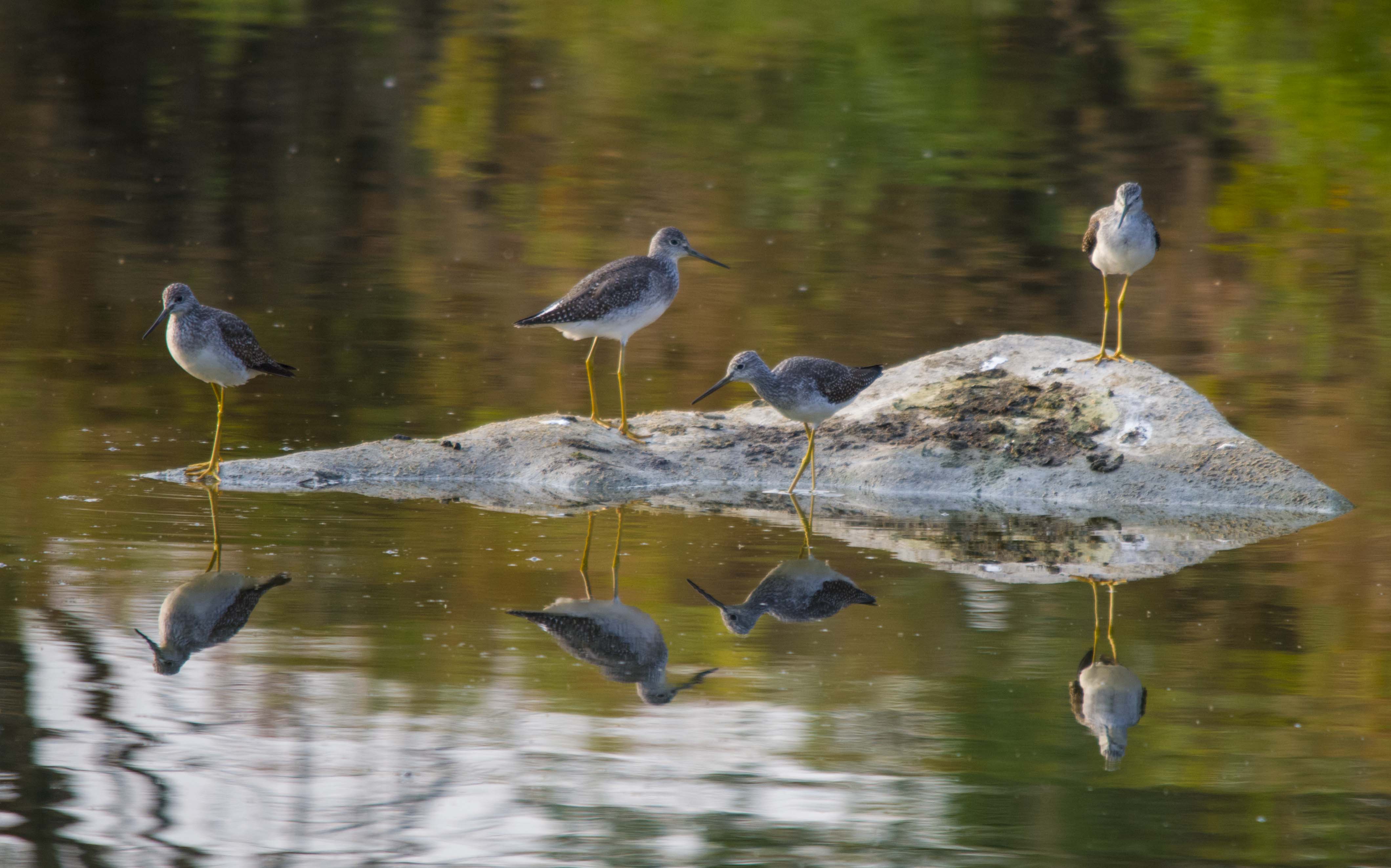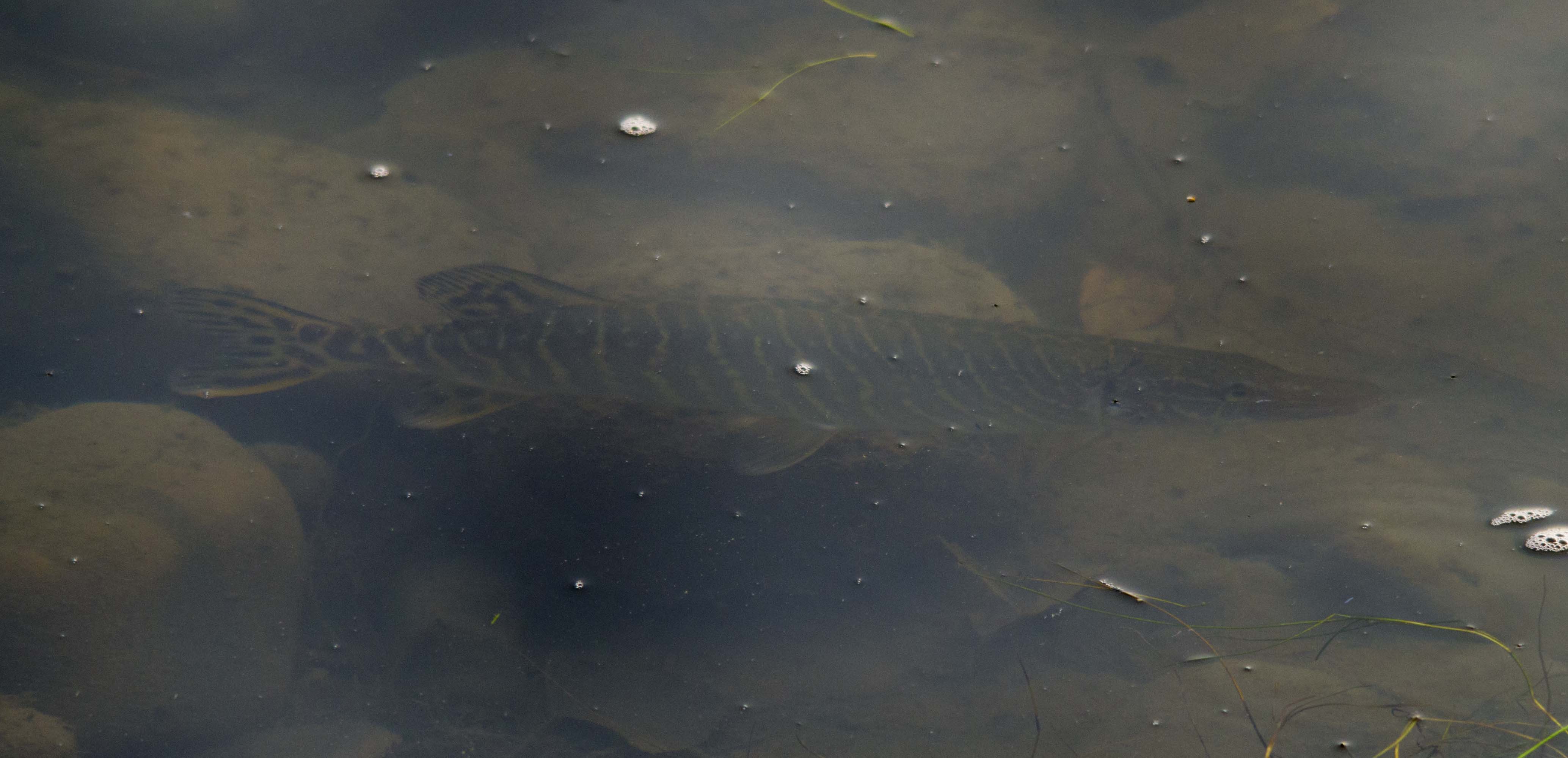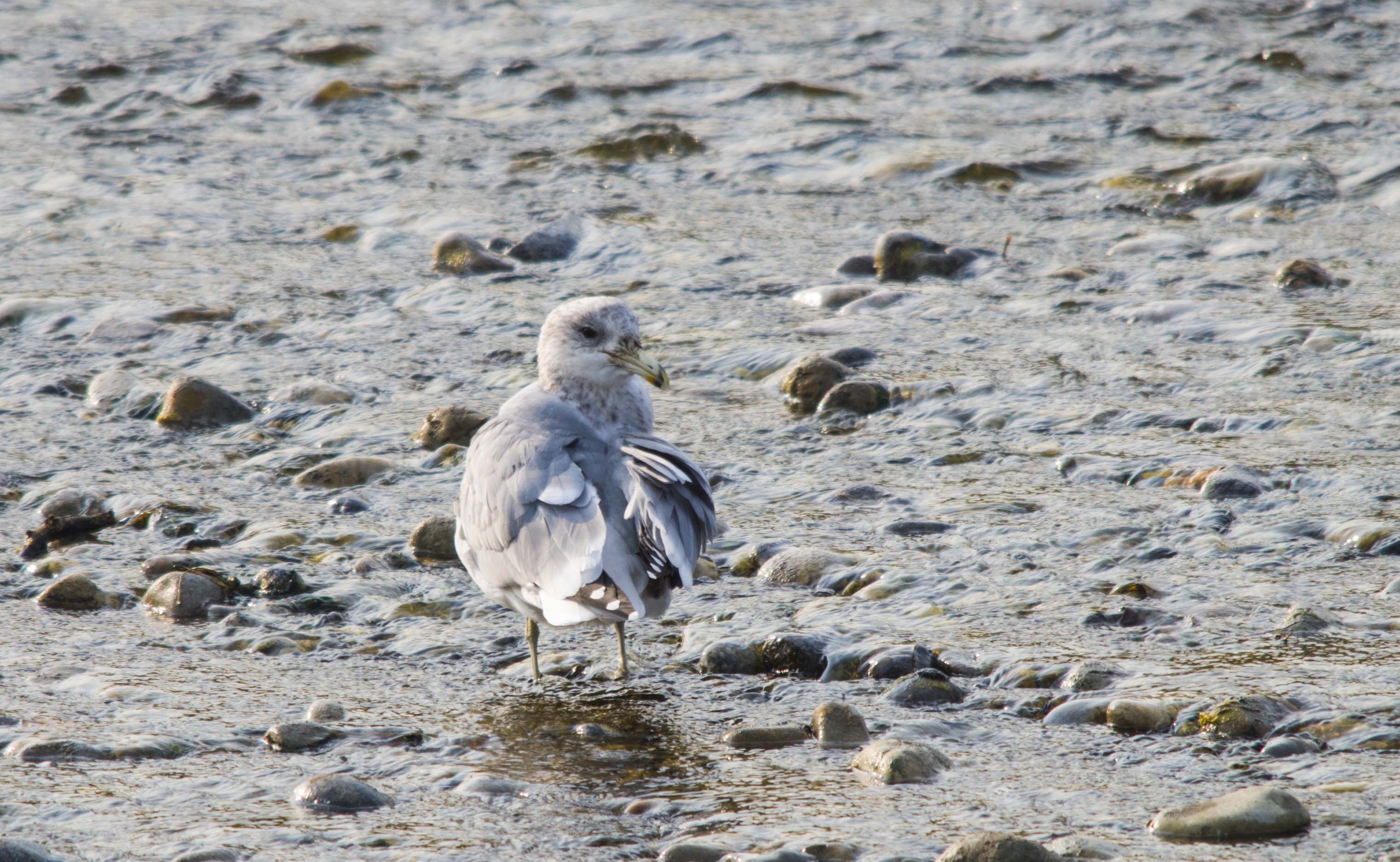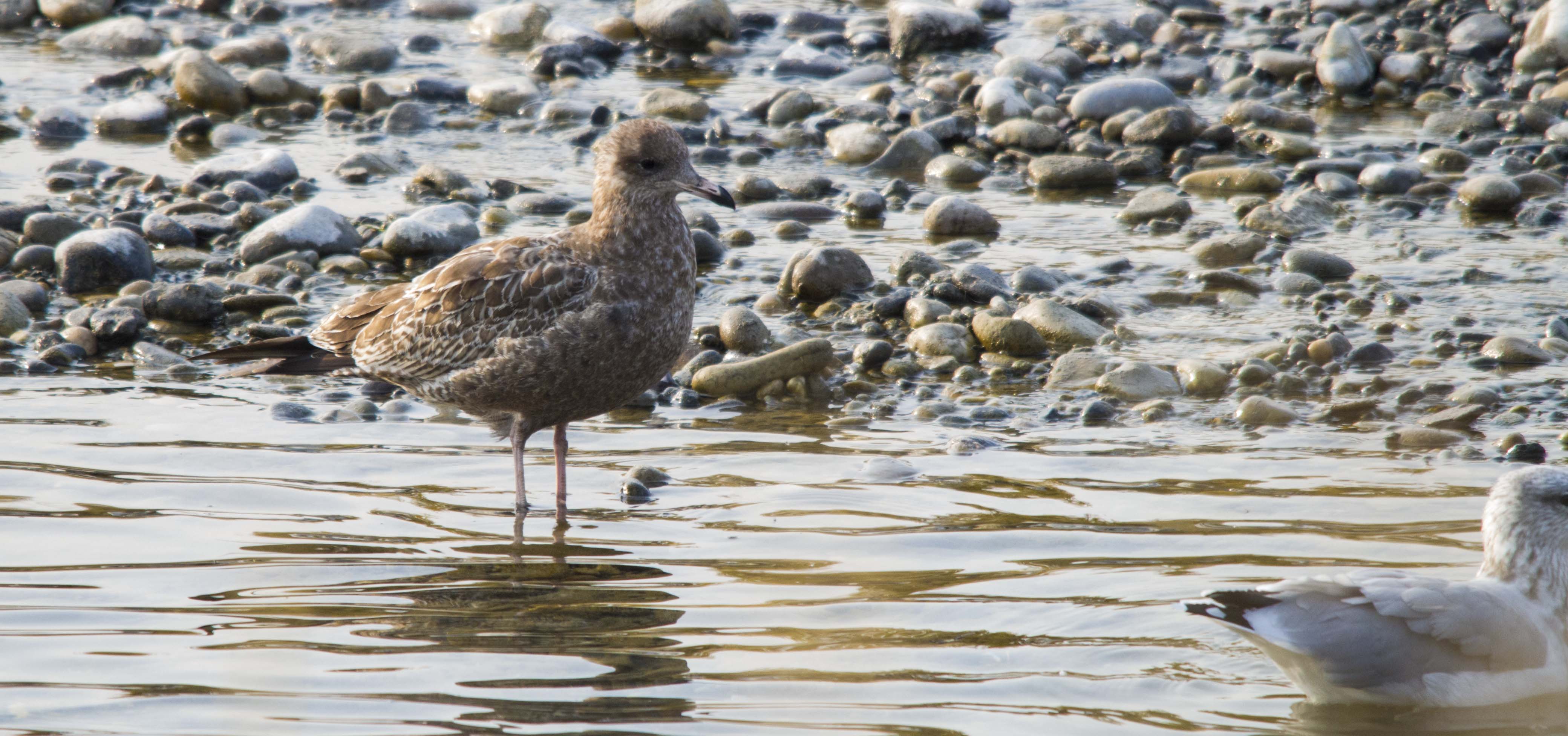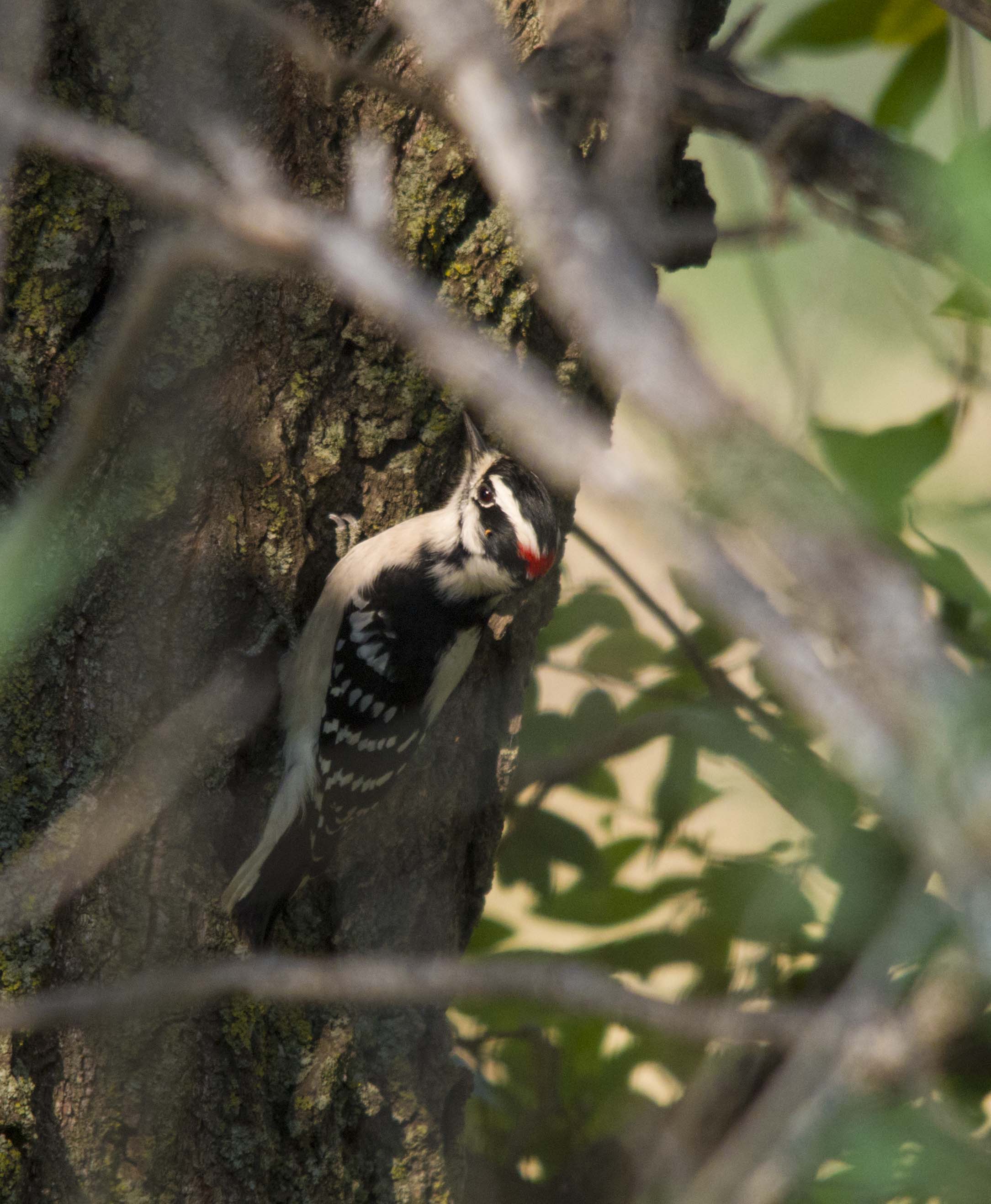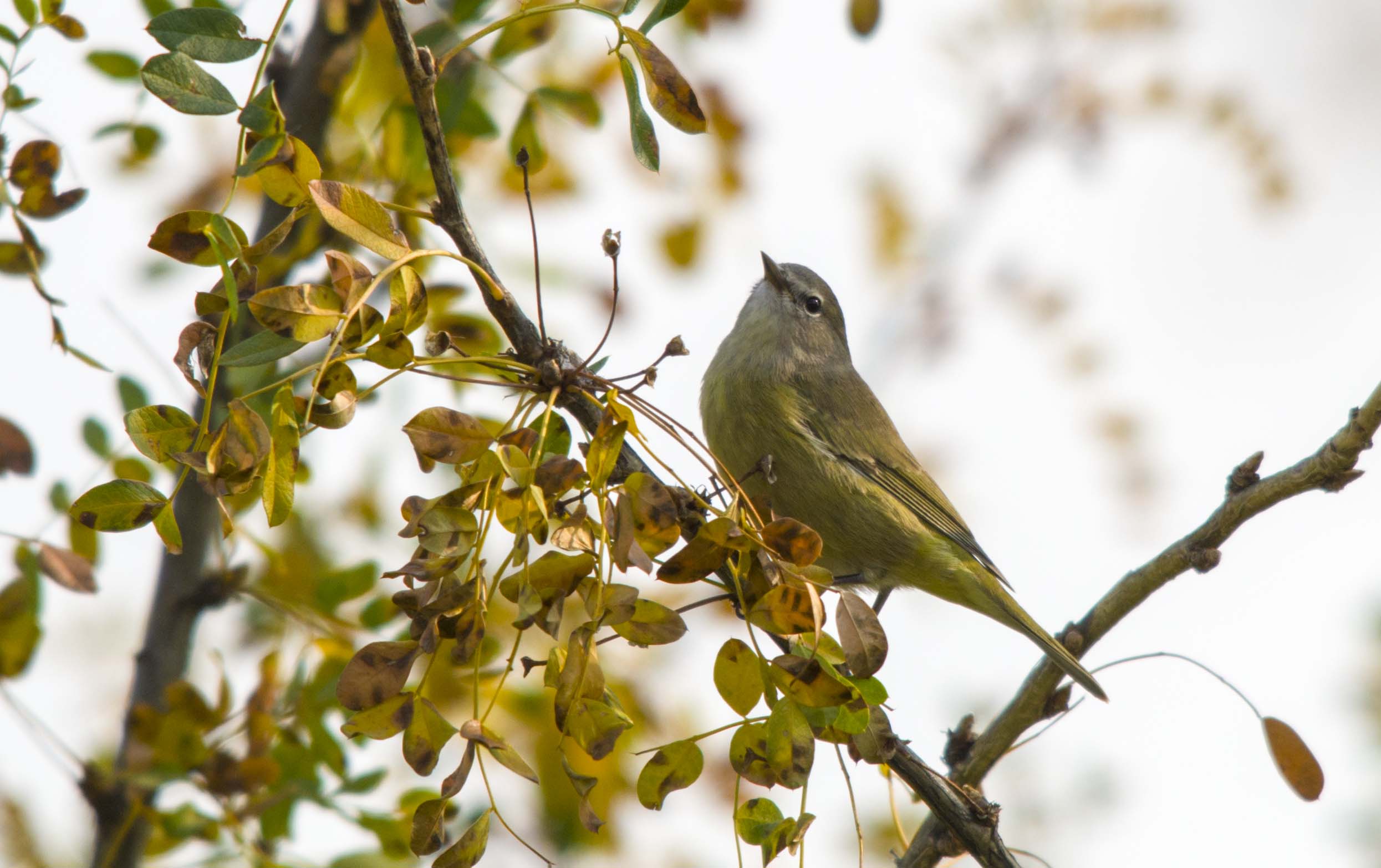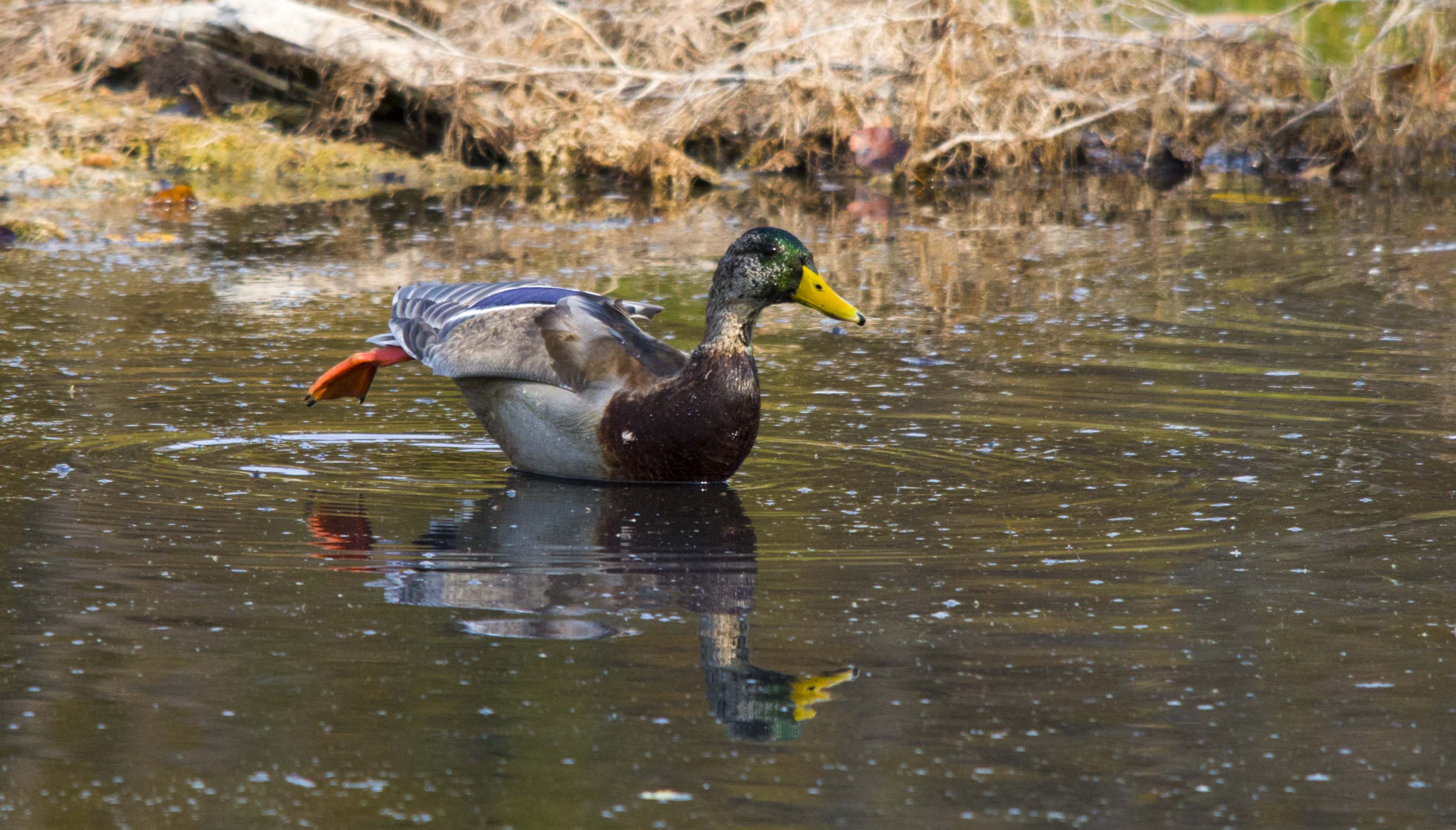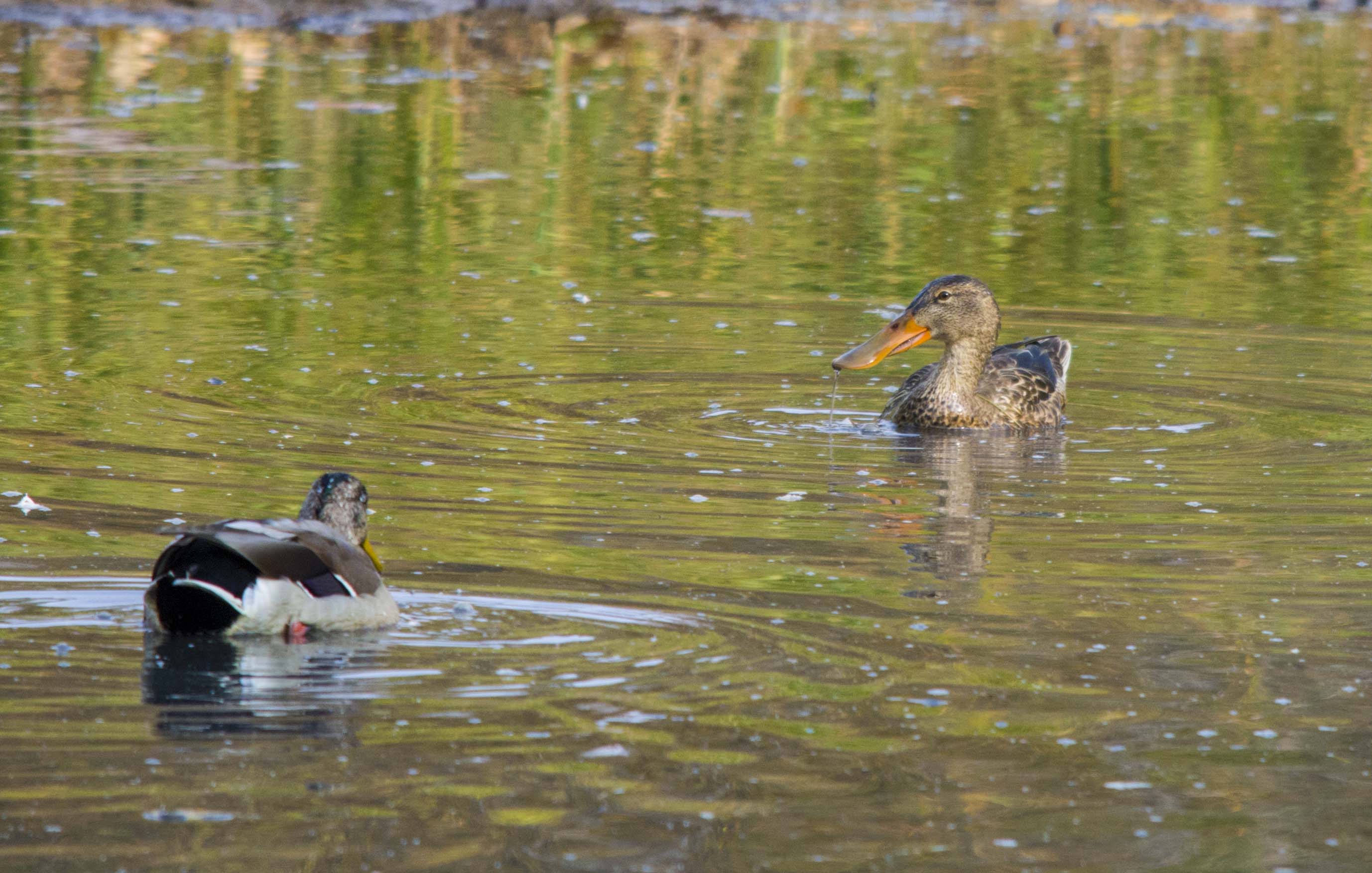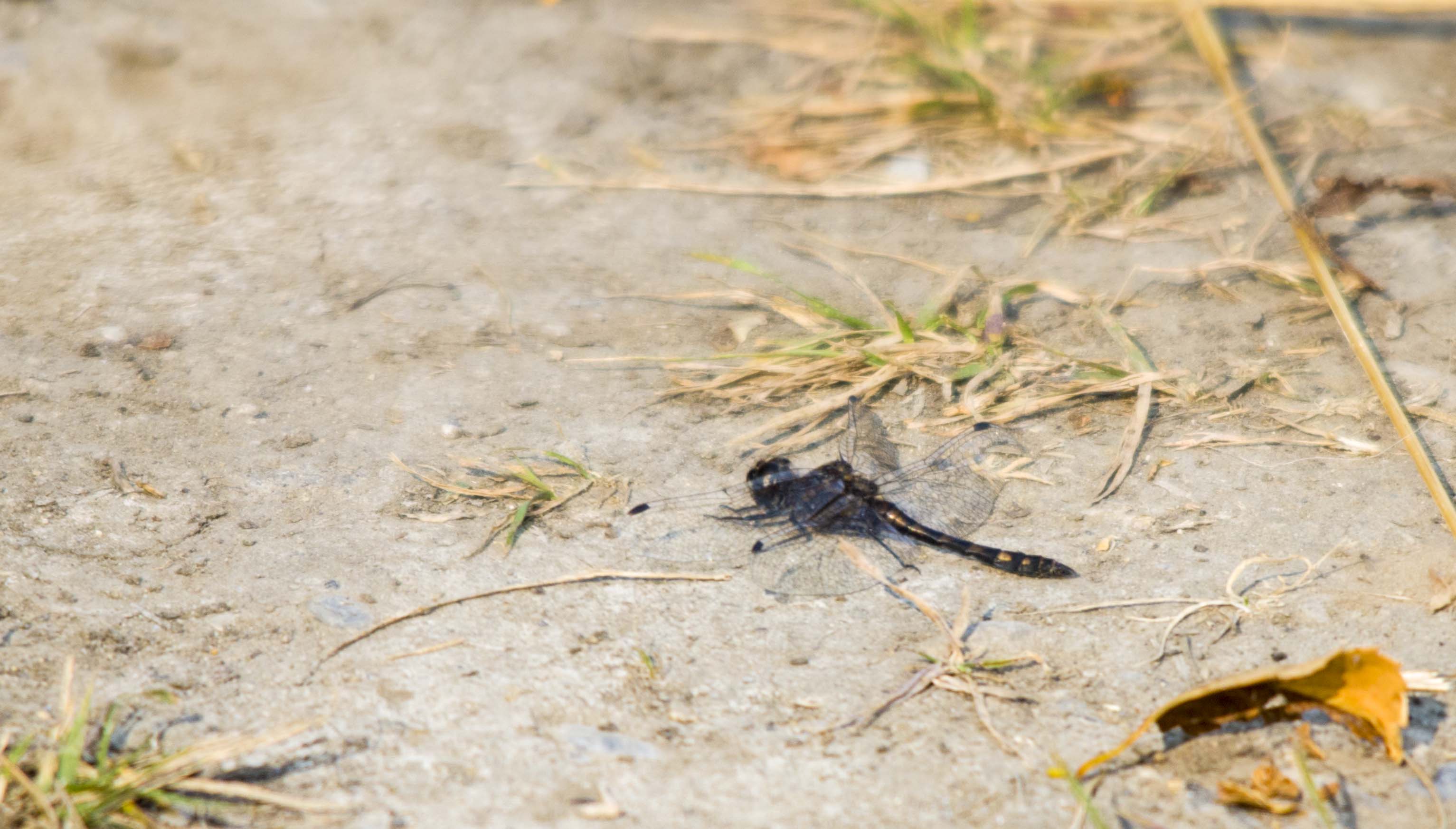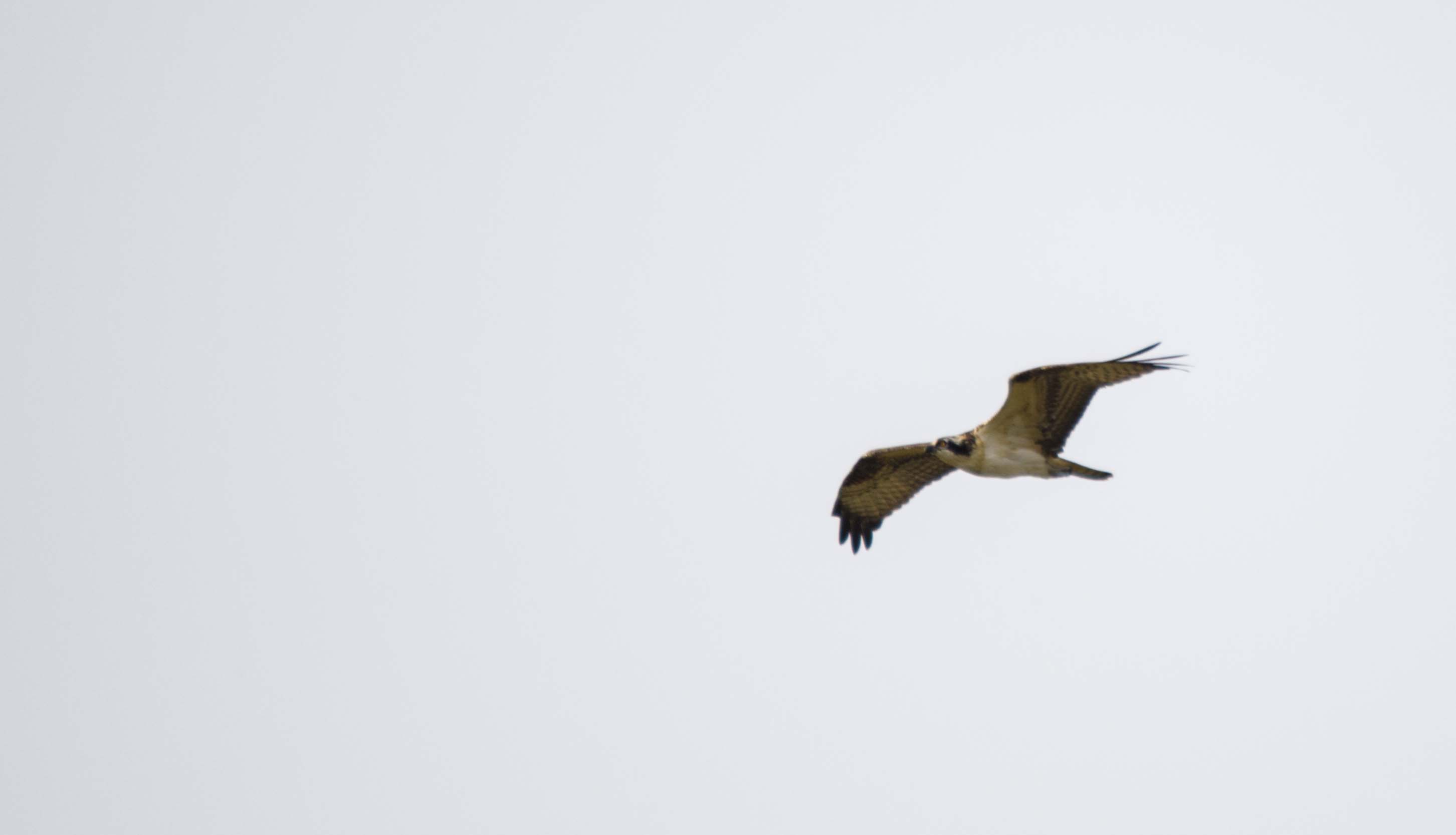Rob English saw this immature Bald Eagle in Hull’s Wood, Fish Creek Park, in early February. It got a little tangled up in the branches as it lifted off.
Tag Archive | Fish Creek Park
Sunday Showcase: Black-backed Woodpecker
The highlight of the 2013 New Year’s Day Bird Count in Fish Creek Park was the rediscovery of a Black-backed Woodpecker, first reported in the area on December 19, 2012. These birds are seldom seen in the Calgary region – I believe it is at least five years since the last one was seen inside the city. On the afternoon of January 1st, I went to the Marshall Springs area to look for it. Luckily for me, Ursula Krol, who had found it in the morning , had returned and found it again.
Photos by Bob Lefebvre
New Year’s Day Bird Count 2013
Posted by Bob Lefebvre
Once again I participated in the Fish Creek Park half-day bird count on New Year’s Day. Though not an official Christmas Bird Count, it is now in its 20th year. Six teams spent the morning counting birds in different parts of this huge park, and then we met at noon to compile the results.
This year I joined Phil Cram’s team in the east end of the park. We covered the Bow Valley Ranch, Sikome, LaFarge Meadows, and Hull’s Wood areas.
It was a beautiful mild sunny day, but we found it pretty quiet when we started at Bow Valley Ranch. We did have six White-tailed Deer pass through before sunrise.
The first mammal of the day – and year.
We failed to find any roosting Great Horned Owls in the row of spruces, and it took a while before we heard even a chickadee. Eventually we heard some White-winged Crossbills in the tall spruces.
Yes, there are crossbills in this photo.
Next we heard the high-pitched call of the Brown Creeper, and found four of them in the area.
Brown Creeper.
Heading over to Sikome, we quickly found the two Great Horned Owls that roost there every winter in the trees behind the buildings.
There are two owls here – one of them is doing its spruce-bark impersonation.
Again, the area was pretty quiet. We did get a flicker and this Downy Woodpecker (but failed to find a Hairy Woodpecker or White-breasted Nuthatch, which are often seen there).
Downy Woodpecker.
Over at the Boat Launch we had four White-breasted Nuthatches, and a flyover of a young Bald Eagle.
Immature Bald Eagle.
On the river we failed to find anything besides Canada Geese, Mallards, Common Goldeneyes, Buffleheads, and Common Mergansers. We had hoped for Killdeer, Barrow’s Goldeneyes, and perhaps some other species of ducks.
Mallards on the ice.
Canada Goose flying over.
At the highway 22X bridge we checked for Rock Pigeons – in these bird counts every new species is important. You never know if any of the other groups will see one or not.
Rock Pigeon, with colours that match the rust on the bridge.
Our final stop of the morning was at Hull’s Wood, where we saw a staggering number of Mallards – about 8000 (some of them were outside our territory and were counted by another group of birders). Again, there were few other species except the usual.
Our best bird of the day was the last, a Northern Goshawk that was being harassed by magpies on the hillside. We didn’t get great looks (and no photos) before it departed.
In the end we had 19 species of birds (and four mammals – Coyote, Eastern Gray Squirrel, and White-tailed Jackrabbit in addition to the deer). A good start to the new year.
The Barred Owl of Bebo Grove
Posted by Bob Lefebvre
Since the Barred Owl was first reported in the Bebo Grove/Shannon Terrace area of Fish Creek Provincial Park, Tony LePrieur has made many trips there to search for it. After almost two months without success, he finally was able to see and photograph it on December 7. He watched it for almost an hour as it hunted. All photos by Tony LePrieur.
Barred Owl with Meadow Vole.
Barred Owls are uncommon in the area and rarely seen in the city. This one (or another Barred Owl) has been in the Bebo Grove area for the last two winters (they are non-migratory, but I don’t think it has been reported in the summer – likely it nested in another nearby area).
If you go looking for it, please stay on the trails and watch from a respectful distance. Do not try to flush it – Barred Owls are vulnerable to predation, especially from Great Horned Owls, which are also in this area.
On the same trip, Tony was entertained by this Merlin which took a bath in Fish Creek.
Friends of Fish Creek – Autumn Birding Course – Week 3, Mallard Point
Posted by Dan Arndt
This week, the Friends of Fish Creek course set out for Mallard Point. Located at the far east end of Fish Creek Provincial Park, it abuts the largest island on the Bow River in Calgary, Poplar Island, which is off-limits to the public, but is viewable from the pathways on both sides of the Bow River. We started at the Mallard Point parking lot, walked north along the river, crossed over the bridge, and to the south-east, parallel to Poplar Island. In total, we discovered 36 species in our three hours along the river, all of which gave us incredible looks at them and were amazing to see, as always, and remember, if you want to see a bigger version of the photos in the blog, just click for a full-sized version!
As we all collected at the parking lot, the consistent racket of a group of 12 Greater Yellowlegs just over the ridge in the flood channel of the Bow River that separates Poplar Island from the rest of Fish Creek Park, and these four decided to ham it up for the photographers of the group, posing close in and making sure everyone got a satisfying look at them.
We headed up to the river to see what birds we could see on the Bow, or flying over it, but the star of the show was this small Northern Pike, who seemed just as interested in staring at us as we were in staring at it.
After crossing the bridge and exploring a bit of the east side of the river, we set our eyes on the small pond that originates from a storm water outflow from the Douglasdale community, and found a fairly large group of American Wigeon joined by a solo female Northern Shoveler.
While I’m not an expert on gulls, I enjoyed the plethora of plumages visible on the gravel bar just south of the second storm-water outflow into the Bow. We saw adult versions of the three most common species of white-headed gulls out there, those being Ring-billed Gulls, California Gulls, and Herring Gulls. I believe we saw juvenile versions of all three of those gulls as well, though I could always be mistaken!
We continued on south-east, and saw one of the harbingers of the change of seasons; a breeding plumaged male Downy Woodpecker. It seems all spring and summer that these guys simply went into hiding, but the last few weeks they’ve reappeared like magic!
One of the highlights of my day at least was seeing this beautiful Orange-crowned Warbler, who, along with a Ruby-crowned Kinglet, Gray Catbird, and about ten Yellow-rumped Warblers were found near the southern-most extent of our walk in the brush, chipping and whistling away while we strained our eyes to find just who was calling in the bushes.
Onward we trekked, and as we neared the furthest point of our walk, we were greeted by another gorgeous sight of a group of Mallard ducks, one of which being a male just coming back into his breeding plumage and showing off the broad violet speculum on his wing while stretching his legs, and in amongst the Mallards was another female Northern Shoveler.
It seemed a fitting end to the walk as we began to head back that many of our other friends from the summer would see us off. There were no small number of Meadowhawk dragonfly species flitting about as the sun warmed them up, and a handful of damselflies as well, but most noticeable was that their numbers were significantly less than last week, and far less than earlier in the summer. I do hope they hold on a while longer, as I always enjoy seeing and hearing them flit about, but it’s just a matter of time before the temperatures drop and the last of them dies out for another year.
As we neared the bridge, and our walk was nearly at an end, we were gifted with just one more species as this Osprey flew overhead. I sure hope he didn’t see our Northern Pike from earlier in the day!
That’s all for now. Next week, Carburn Park!
Birding the Lafarge Meadows ponds
Posted by Matthew Sim
In the last few weeks, I have made several trips on my own down to the sloughs at Lafarge Meadows. There is always action there; be it coots feeding young ones, Pied-billed Grebes fishing, Ruddy Ducks courting, Red-necked Grebe diving or Yellow-headed Blackbirds chasing every other bird.
One of my favorite parts about the Lafarge Meadows sloughs are the Red-necked Grebes. I have counted as many as 4 pairs at a time on the ponds and have also enjoyed watching them court side by side.
The Red-necked Grebe is not the only grebe that can be seen at the ponds. The smaller Pied-billed Grebe also calls the sloughs home.
So far, I haven’t seen any young Red-necked Grebes but I have seen several families of Pied-billed Grebes.

There are also several other families on the ponds, including Mallards and Common Goldeneyes.
And while I was enjoying these great sights; I couldn’t forget the birds that truly make a southern Albertan slough like the Ruddy Duck, the American Coot, the Yellow-headed Blackbird- and of course, on the mammal side of things, the Muskrat.
A Big Day in Fish Creek
Posted by Matthew Sim
This past Friday, I did a Big Day in Fish Creek. For those of you who do not know what this is, a Big Day is when you try to see and hear as many species as possible within a 24 hour day. For my Big Day, I spent more than 10 hours in Fish Creek, doing the entire day by bike, riding about 74 kilometers (46 miles) throughout the park and recording 93 species of birds, falling short of my goal of 100. Temperatures ranged from 6-15 degrees Celsius and there were a few showers. I started at about 5am and took a 2 hour weather break at lunch time, hoping for some of the rain to blow over, before returning at 2 and counting for another 3 hours. A full list and a more detailed report of the day can be seen here: http://groups.yahoo.com/group/Albertabird/message/20841
Here are some photos from the day:
A trip to Fish Creek
Posted by Matthew Sim
After arriving back in Calgary from Houston for the summer last Friday, I couldn’t wait to get back out to Fish Creek. Sunday morning found me up bright and early (6:00) and out on my bike, riding down to Fish Creek Provincial Park, one of my favorite birding (and for that matter, one of my favorite natural) locations.
Almost immediately, I was seeing good birds. At the stormwater ponds between the Glennfield area and the Bow Valley Ranch I saw lots of waterfowl, including a pair of Cinnamon Teal and many Common Goldeneye ducklings.
At one pond, a coyote was hunting something in the long grass and remained oblivious to my presence.

After observing the coyote for some time, I continued riding my back towards the Ranch. I crossed bridge #11 and started towards Sikome and the river, but stopped abruptly when I saw the Great Horned Owl family; 5 in all, 3 owlets and their parents.

We as Calgarians are truly lucky to be able to observe owlets up close each year as they are never far off the path in Fish Creek. I marveled at the owls seemingly majestic haughtiness, as they all stared me down. Before long, I was off again, stopping again when I saw a strange sight at the top of a conifer. At the very top was a Brown-headed Cowbird, surrounded by what must have been millions of little bugs.
As I passed through the Sikome area, I observed many Richardson’s Ground Squirrels.
As I finally reached the river and the Hull’s Wood area of the park, I spotted what was probably the most colorful bird of the day; a male Baltimore Oriole.
There was a female with him and they seemed to be paired up, however she was more secretive as she gathered nest material and disappeared high into the poplars to build her hanging nest.
This trip to Fish Creek was excellent, and for me, having moved away, I now fully appreciate what a great park Fish Creek is.
A Cold Morning In Hull’s Wood
Posted by Bob Lefebvre.
Week Two of the Spring session of the birding course with the Friends of Fish Creek saw us exploring Hull’s Wood and the boat launch area, at the east end of Fish Creek Park. It was quite cold at 7:30 a.m., about minus 4 degrees Celsius, with a north wind and light snow, and the conditions didn’t change much over the three hours. Nevertheless, we did manage to see some spring migrants. Once again, the photos were provided by Paul Turbitt and Glenn Alexon.
Franklin’s Gull. Photo by Paul Turbitt.
We saw about 75 of the black-headed Franklin’s Gulls over the river. As you can see in the photo, these gulls often have a pinkish tinge to their breast feathers in the spring. Several gull species show this feature when they arrive on their breeding grounds, and it is thought to be a result of carotenoids in their diet. In the case of Franklin’s Gulls, it is caused by their consumption of shrimp on their wintering grounds off the coast of Venezuela. By fall it often fades away.
Canada Geese are nesting in broken treetops in the area, where they are safe from coyotes and dogs. Here a male stands guard near the nest.
Canada Goose. Photo by Glenn Alexon.
We walked north along the river, and scoured the rocky banks for American Pipits. Up to 80 had been seen in the area earlier in the week. We weren’t able to locate any, but I’ll get back to the pipits later.
We saw two bald eagles along the river: one adult, and one juvenile which put up all the waterfowl as it flew over. There were also at least two Red-tailed Hawks.
Red-tailed Hawk. Photo by Glenn Alexon.
A White-breasted Nuthatch was busy excavating a nest hole. Here he is removing some wood from the nest.
As we neared the mouth of Fish Creek we watched a flock of over 200 European Starlings repeatedly flying down to the water and back up to the trees. Then we noticed another huge flock of small birds, which turned out to be Tree Swallows, working their way north along the river. I estimated about 100 in the first flock, which was followed immediately by another of the same size, then another, and another. It was really just one huge flock numbering up to 800 birds.
We then turned away from the river, and out of the wind, to check out the two Great Horned Owl nests in the area. The young owlets have been seen in one of the nests, but when we were there we weren’t lucky enough to see them.
Adult male Great Horned Owl standing guard near the nest. Photo by Paul Turbitt.
Near the second owl nest we found a pair of Wood Ducks sitting in a tree. These birds nest in tree holes so maybe they will nest in this area.
Male Wood Duck. Photo by Paul Turbitt.
Female Wood Duck. Photo by Glenn Alexon.
Photo by Glenn Alexon.
We finished up by checking the pond near highway 22X. There wasn’t much there, but we were treated to Red-winged Blackbirds, a first of the year for some of the participants.
Red-winged Blackbird. Photo by Paul Turbitt.
Finally, as we arrived back at the boat launch parking lot, we were treated to a Great Blue Heron flyover.
Great Blue Heron. Photo by Paul Turbitt.
That was a great way to finish the day for me and most of the others, but three people went back along the Bow to see if they could scare up some American Pipits. By walking right near the shore, they did manage to find them. These birds can hide quite effectively in the rocks and grass.
American Pipits. Photo by Paul Turbitt.
Photo by Glenn Alexon.
When they were watching the pipits, a Mountain Bluebird appeared, then flew across the river.
Mountain Bluebird, from across the Bow River. Photo by Paul Turbitt.
One of the photos that Paul took of the pipits showed a bird that I was sure was not an American Pipit, but couldn’t identify. Gus Yaki has identified it as a Sprague’s Pipit. This is a bird of the prairies which is rarely seen in the city.
Sprague’s Pipit. Photo by Paul Turbitt.
I will be heading back to this area regularly in the next few weeks to watch the development of the Great Horned Owlets.
Photo by Glenn Alexon.
Paul Turbitt’s Nikonians page.
Revering a Raptor
From the day that I first laid eyes on the species, gliding on broad wings over a coniferous forest in the Rocky mountains of Alberta, I have always looked with awe at it, astounded by its sheer magnificence. Many people have soft spots for raptors. I have a soft spot for one in particular: the Northern Goshawk.
I first saw a goshawk just over a year ago. It was early October 2010, and I had signed up for the Mount Lorette Golden Eagle field trip with Nature Calgary. I went out on my own to explore the area right around the location of the watch, and, while out on the path, witnessed an adult goshawk rise up from the spruce trees and circle away. From that moment on I was always looking for goshawks; every chance I got, I would go searching for them.
Several days later, on a biking trip to Fish Creek Provincial Park, I came across an adult Goshawk perched high up in a poplar, sitting and gazing at the world around him. I stood and watched this magnificent raptor for more than half an hour, pointing the bird out to anybody who came near. Many of these were joggers or were merely walking their dogs. They took little interest in this bird, that is somewhat tricky to spot in the city of Calgary. I was rewarded though by the few who did pause to look up at the goshawk and comment on his size.
“What did you say it was called?”
“A Northern Goshawk”, I would reply eagerly, ” it’s somewhat unusual here in Calgary.”
“Really? Wow! Look at how big he his!” After staring up at him for several more seconds, they would smile and move on. Hopefully the Goshawk had made an impression on them though.

While I watched this large, strong accipter (agile, forest dwelling hawks with short rounded wings and long tails) it scratched its head withs its talon, giving me glimpses of those wicked sharp utensils it uses to tear apart its prey. Eventually, it lifted off and disappeared amongst the trees.
Goshawks are among the largest, strongest and most audacious of the hawks of North America. In November 2010, a little over a month since I first observed this species, I got an excellent opportunity to view this audacity. I was riding my bike home from Fish Creek and was running slightly late. I looked down for a moment as I pulled onto a dirt path going around a storm water pond, and, when I looked up again, there, sitting merely yards away from me in a small tree no taller than 10 feet, was an adult goshawk. They now seemed to be everywhere I went! I slammed on the brakes as hard as I could and screeched to a stop, panting breathlessly. Pulling out my camera, I marveled at how close this bird had let me get. I stood watching him, he stood watching me, this went on for several minutes before he abruptly flew away.
Instead of leaving altogether though, the goshawk started hovering over a field, pulled up, started hovering again and then pulled up once more. Then, with a sharp turn, he came whizzing right at me and flew by me at a distance of about 4 feet! The raptor was so close that my lens couldn’t focus on it!
These incredibly neat personal experiences combined with an amazingly beautiful species, have come to make me love the Northern Goshawk.
Posted by Matthew Sim
